English literature consists of the poetry, prose, and drama written in the English language by authors in England, Scotland, and Wales. These three lands occupy the island of Great Britain and are political divisions of the United Kingdom of Great Britain and Northern Ireland. They have produced many outstanding writers.
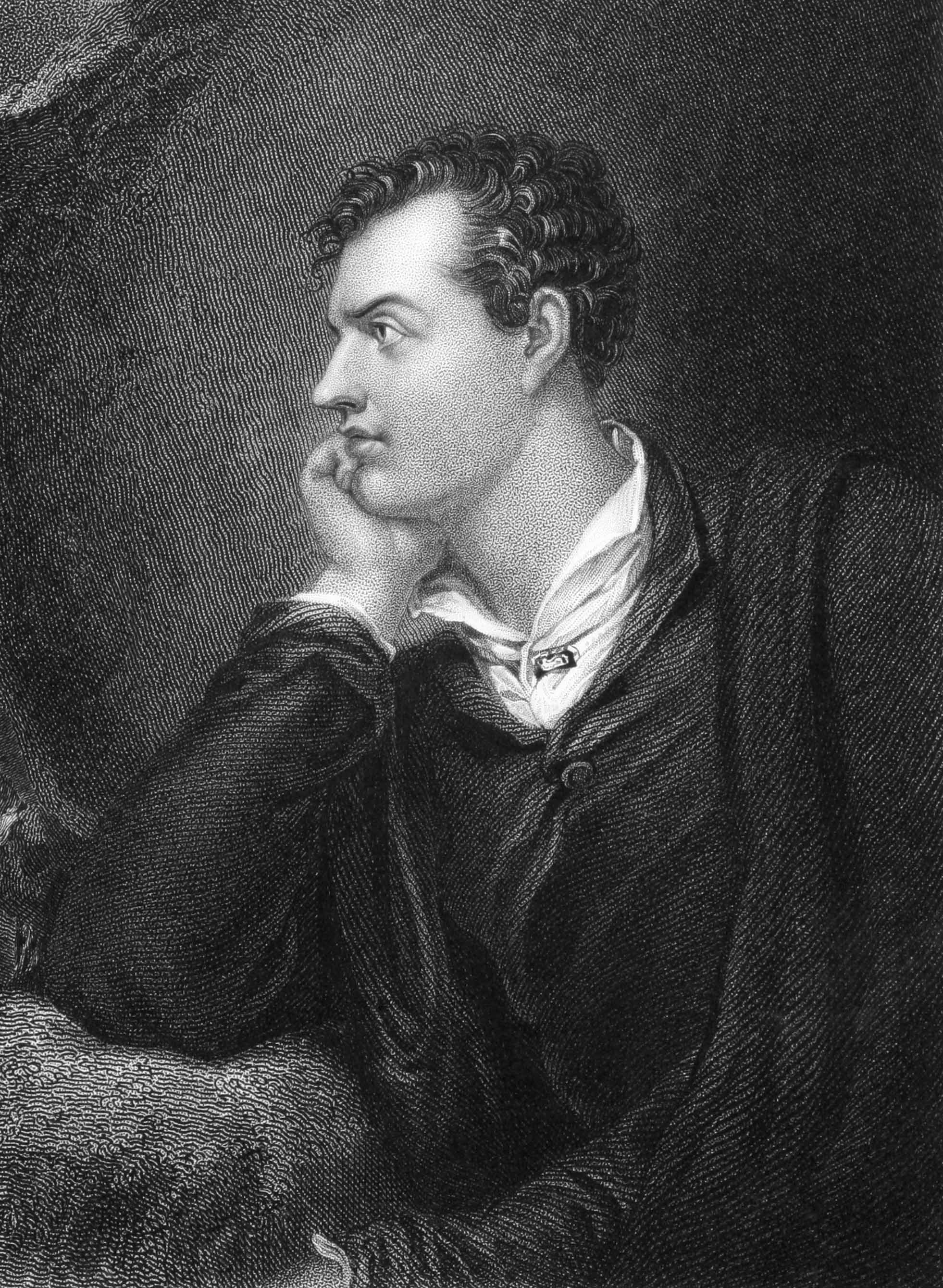
English literature is a rich, varied literature. It includes masterpieces in many forms, particularly the novel, the short story, epic and lyric poetry, the essay, literary criticism, and drama. English literature is also one of the oldest national literatures in the Western world. English authors wrote important works as early as the A.D. 700’s.
This article traces the history of English literature from its earliest period to the present. The dates given for each period in the development of the literature are approximate. The article deals with works written in English by authors whose lives and careers have been based in England, Scotland, and Wales. For information on the literature of the United States, Canada, Australia, and Ireland, see the articles American literature, Canadian literature, Australian literature, and Irish literature.
Old English literature (500-1100)
During the A.D. 400’s and 500’s, three Germanic tribes—the Angles, Jutes, and Saxons—settled in England and established powerful kingdoms. Together, these tribes are called Anglo-Saxons. They used dialects that became known as Old English or Anglo-Saxon. Old English was the chief literary language of England until about 1100. In 597, Saint Augustine of Canterbury began converting the Anglo-Saxons to Christianity. English literature began through the combined influence of the Anglo-Saxon kingdoms and the Christian church. Many of the 400 or so known works of Old English are religious in nature. They include the lives of saints, translations of sections of the Bible, and meditative lyrics, such as The Dream of the Rood from the 700’s.
Old English poetry.
Many Old English poems glorified a real or imaginary hero and tried to teach the values of bravery and generosity. Poets used alliteration (words that begin with the same sound) and kennings (elaborate descriptive phrases). They also used internal rhyme, in which a word within a line rhymes with a word at the end of the line.
The first English poet known by name is Caedmon, who lived during the 600’s. His only authentic surviving work is a nine-line hymn that praises God.
The first major work of English literature is the epic Beowulf. Epics are long narrative poems that focus on heroic and extraordinary actions. Many are based on legend or myth, and their language is dignified and serious. One or more unknown authors wrote Beowulf some time between 750 and 1100. The poem, set in Scandinavia in the 400’s, tells about the encounters of a warrior named Beowulf with dragons and monsters.
After about 750, poetry flourished in Northumbria, an Anglo-Saxon kingdom in the north. There, poets wrote verses about religious and philosophical subjects. The leading Northumbrian poet was Cynewulf, best known for his The Fates of the Apostles and The Ascension (also called Christ II, because it is the second part of Christ, a trilogy of three poems by different authors). The Exeter Book manuscript collection from the west of England contains the most important lyric verse of the period, including the anonymous poems The Wanderer and The Seafarer.
Old English prose.
Most prose writers wrote in Latin until the late 800’s, when Alfred the Great became king of Wessex in southwestern England. Alfred translated or ordered the translation of several works from Latin into Old English. One of the most important of these works was the Ecclesiastical History of the English People (731) by a monk called Saint Bede or the Venerable Bede. This is the first history of the English people and a valuable source of information about English life from the late 500’s to 731. A monk named Aelfric wrote homilies (short moral essays) in Old English during the 990’s. From about 892 to 1154, a number of authors contributed to the Anglo-Saxon Chronicle, which was a record of current events in England.
Middle English literature (1100-1485)
In 1066, Norman invaders from France conquered England. For more than 200 years thereafter, members of the royal court and the upper class spoke French. Only the common people continued to speak English. By about 1300, however, English had again become the chief national language, though in an altered form now called Middle English. One of the earliest examples of early Middle English can be found in the Peterborough Chronicle, the only version of the Anglo-Saxon Chronicle that extends all the way to the mid-1100’s. In the entries written by the monks at Peterborough for the years from the 1120’s to 1154, scholars can trace the evolution of the English language from Anglo-Saxon to Middle English.
The development of English romances.
Medieval romances originated in France during the 1100’s. By the end of the 1200’s, they had become the most popular literary form in England. Like epics, romances describe the adventures of heroes, but their plots depended more on supernatural events and featured stories of love and high-born ladies. Middle English romances were written in prose as well as verse.
In 1155, a Norman poet named Wace completed the first work that mentioned the Knights of the Round Table, who were led by the legendary British ruler King Arthur. King Arthur and his knights became a favorite subject in English romances. During the 1400’s, Sir Thomas Malory wrote a prose work called Le Morte Darthur (The Death of Arthur). Malory’s romance is the most complete English version of stories about Arthur.
The age of Chaucer.
The greatest writer of the Middle English period was the poet Geoffrey Chaucer. His works are deeply influenced by Italian tales and romances and are wonderfully imaginative and gripping. They include his early The Book of the Duchess (1368) and mature poems, such as Troilus and Creiseyde (about 1386) and The Parliament of Fowls (1380?). His masterpiece is The Canterbury Tales (about 1386-1400), an unfinished collection of comic and moral stories told by a group of men and women of all ranks and professions to entertain one another while on a pilgrimage to Canterbury. Chaucer introduced a rhythmic pattern called iambic pentameter into English poetry. This pattern, or meter, consists of 10 syllables alternately unaccented and accented in each line. The lines may or may not rhyme. Iambic pentameter became a widely used meter in English poetry.
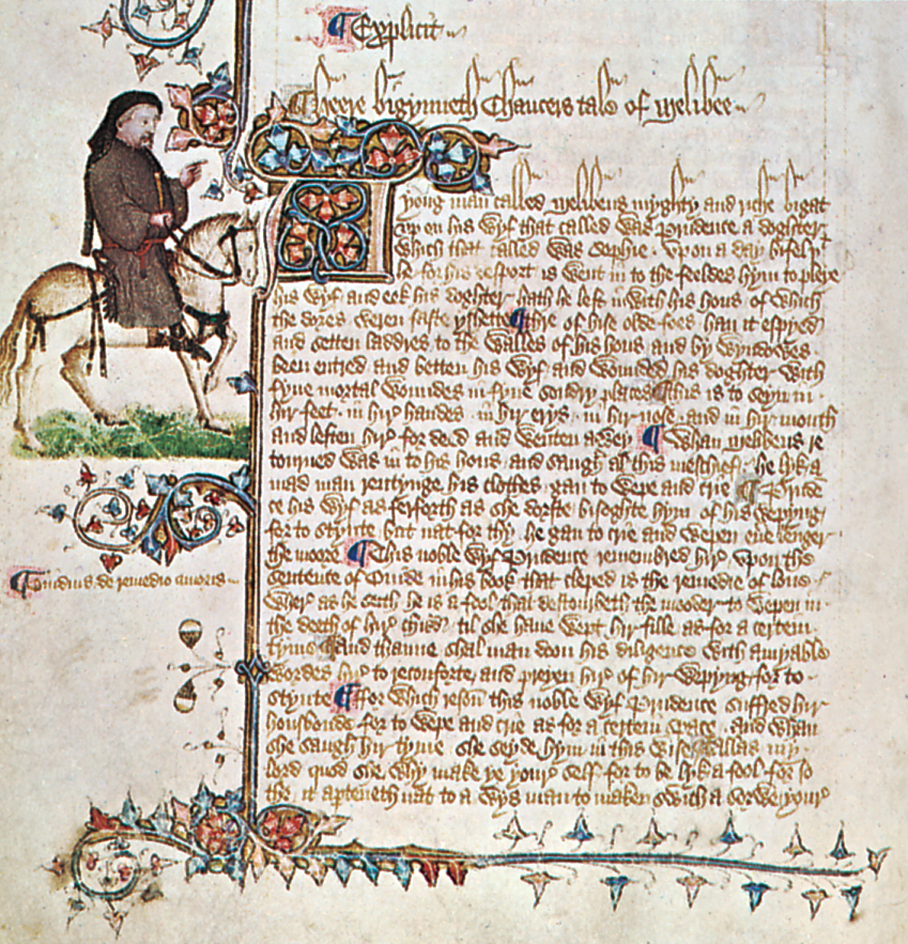
Chaucer’s friend John Gower wrote verse in Latin and French, though his Confessio Amantis (about 1390) is a Middle English poem. In that work, he used Biblical, medieval, and mythological stories to discuss the problems of romantic love. A religious and symbolic poem called Piers Plowman has been attributed to William Langland. It describes a series of dream visions that show humanity’s struggle to arrive at spiritual salvation. Three versions of the poem appeared in the late 1300’s. Like the works of Chaucer and Gower, Piers Plowman provides a fascinating glimpse of English life during the 1300’s.
Another important work of the late 1300’s is a poem called Pearl. In this poem, a father mourns the death of his young daughter. He is finally comforted through a dream vision in which the girl tells him of the blessings of heaven. Pearl is unusual because it combines the alliterative style of earlier English verse with a strict rhythmic structure and complex rhyme scheme. The same poet is thought by some scholars to have written the poetic narrative Sir Gawain and the Green Knight, in which one of King Arthur’s knights beheads a mysterious knight who represents fertility or regeneration.
Early English drama
developed from scenes that monks acted out in churches to illustrate Bible stories. The scenes grew into full-length works called mystery plays and miracle plays. Mystery plays deal with events in the Bible, such as the creation of man, the rivalry between Cain and Abel, and Abraham’s near sacrifice of Isaac. Miracle plays deal with the lives of saints.
During the 1400’s, morality plays first appeared in English drama. Morality plays featured characters who represented a certain quality, such as good or evil. These dramas were less realistic than the earlier plays and were intended to teach a moral lesson. One of the earliest morality plays is The Castle of Perseverance. One of the most famous is Everyman.
Middle English prose
consists mainly of religious writings. Often such works were intended for women readers, because women were much less likely than men to be taught Latin. Latin was the language of the Roman Catholic Church, the dominant church in much of Europe at that time. One well-known work of the period is The Book of Margery Kempe, dictated during the 1430’s by a woman who could not read or write. It is an autobiography that describes Kempe’s mystical visions, her pilgrimages, and her struggles with the official church of her time.
The beginning of Modern English (1485-1603)
During the late 1400’s, Middle English began to develop into Modern English. By the late 1500’s, people in England were speaking and writing English in a form much like that used today.
In Scotland, William Dunbar was court poet during the reign (1488-1513) of the Scottish king James IV. Dunbar wrote religious, moral, and satiric verse, including comic scenes set in hell in his Dance of the Seven Deadly Sins. Dunbar is best known for a kind of abusive satire called flyting. John Skelton was an English poet in the courts of Henry VII and Henry VIII in the late 1400’s and early 1500’s. Skelton developed a precise, rhythmic, and biting style later called Skeltonic meter. He attacked court officials in his poem The Bowge of Courte and church practices in The Boke of Phyllyp Sparowe.
In prose, Sir Thomas More’s The History of King Richard III was published in both Latin and English after More’s death in 1534. More’s most famous work was Utopia, modeled on classical literature’s accounts of travels to unknown places. It was written in Latin in 1516. Raphael Holinshed compiled the Chronicles of England, Scotland, and Ireland (1577), a work that William Shakespeare turned to repeatedly in writing his history plays.
Queen Elizabeth I reigned from 1558 to 1603. During this period, usually called the Elizabethan Age, English writers produced some of the greatest poetry and drama in world literature.
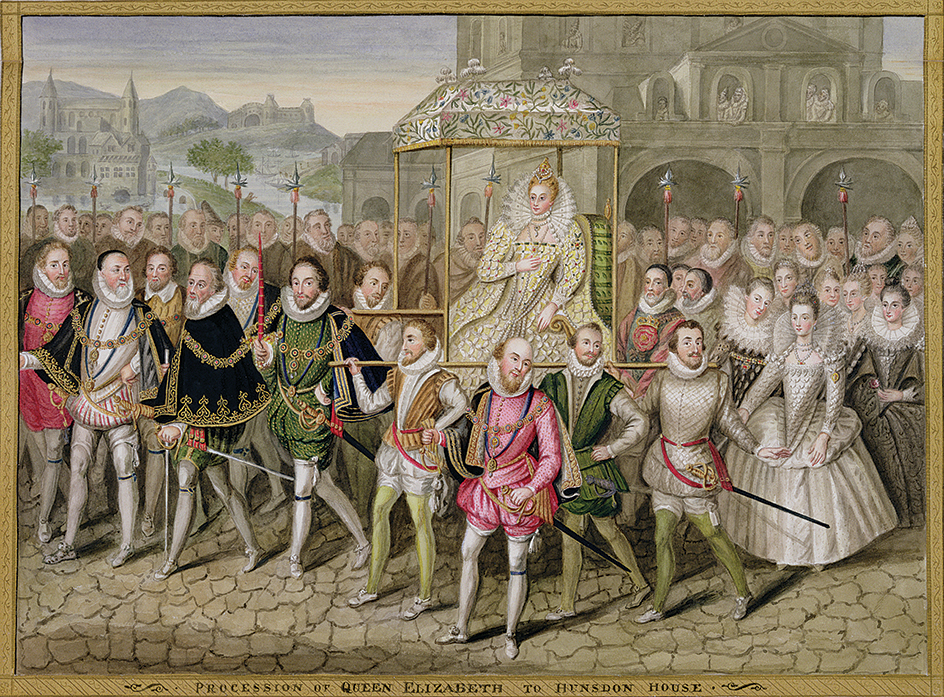
Religious debates also played a role in the development of a reading public. During the reign of Elizabeth’s father, King Henry VIII, the English church became independent of the Roman Catholic Church. Under the influence of the Protestant Reformation, Bible reading was encouraged. During the 1520’s, William Tyndale made an important new English translation of the Bible. John Foxe’s Actes and Monuments, also called the Book of Martyrs (1563), was one of the most intense attacks on Roman Catholicism and powerful justifications of Protestantism during the period. Richard Hooker wrote what is probably still the most sustained defense of the Anglican Church, the eight-volume Of the Laws of Ecclesiastical Polity (1594 to mid-1600’s, after his death).
During the 1500’s, English scholars joined other European scholars in rediscovering the cultures of ancient Greece and Rome, which they had largely neglected for hundreds of years. Translations of Greek and particularly Roman literary works strongly influenced Elizabethan writers. In addition, new literary forms were introduced into English literature. For example, English authors adopted directly or modified such literary forms as the essay from France, most notably Francis Bacon’s Essays (1597), and the sonnet from Italy, reworked by Sir Thomas Wyatt and the Earl of Surrey.
During the Elizabethan Age, the English also explored and colonized distant lands, documented by the extremely popular book The Principall Navigations, Voiages, and Discoveries of the English Nation (1589) by Richard Hakluyt. Wealth from the colonies poured into England. A newly rich merchant class made London a great commercial center. The merchants and the nobility wanted entertainment and fine art and were willing to pay for them. Writers, painters, and musicians flocked to London, making it a European cultural center. One of the great works of the period documented the range, variety, and physical layout of London life, John Stow’s Survey of London (1596). Modern thought and science were best captured at the end of the Elizabethan period by Francis Bacon’s The Advancement of Learning (1605) and the two-part Great Renewal (1605, 1620), a plan to map out all of human knowledge.
Elizabethan poetry.
Three chief forms of poetry flourished during the Elizabethan Age. They were (1) the lyric, (2) the sonnet, and (3) narrative poetry.
The lyric.
A lyric is a short poem that expresses private emotions and moods in a songlike style. Thomas Campion wrote many beautiful lyrics in his Books of Airs (1601 to about 1617). Many of the songs performed in the drama of the period contributed to the lyric tradition and are still sung today in various versions.
The sonnet
is a 14-line poem with a certain pattern of rhyme and rhythm. Elizabethan poets wrote three types of sonnets, Italian, English, and Spenserian. The three types differ in the arrangement of the rhymes into line groupings. Sir Thomas Wyatt introduced the sonnet from Italy into English literature in the early 1500’s. Several of his poems rank among the best of the age, including “They Flee from Me” and “Whoso List to Hunt.” The Earl of Surrey modified the Italian form into the English sonnet based on three quatrains and a couplet. A quatrain is a four-line stanza. A couplet is a rhyme of two lines. Wyatt’s and the Earl of Surrey’s verses were published in a collection commonly called Tottel’s Miscellany (1557). Edmund Spenser modified the rhyme scheme of the English sonnet by carrying over rhyming lines from quatrain to quatrain.
Edmund Spenser, Sir Philip Sidney, and William Shakespeare wrote sonnet sequences, groups of sonnets based on closely related themes. Spenser’s Amoretti (1595) and Sidney’s Astrophel and Stella (1580’s) are sequences of love sonnets. Shakespeare wrote a sequence addressed to a nobleman who was his patron and to an unknown “dark lady.”
Loading the player...Sonnet 130 by William Shakespeare
Narrative poetry.
A narrative poem tells a story. In addition to sonnets, Shakespeare and Spenser wrote narrative poems. Shakespeare based his Venus and Adonis (1593) on a Roman myth and The Rape of Lucrece (1594) on an event from Roman history. Perhaps the most ambitious Elizabethan narrative poem is The Faerie Queene (first published in 1590 and continued in 1596) by Spenser. The poet borrowed heavily from medieval romances to invent an imaginary land representing British and Christian ideals. The style of the poem is allegorical. In allegorical writing, people and objects are used to represent abstract ideas, such as holiness and justice. The Faerie Queene combines those abstract moral meanings with striking visual imagery and elaborate adventures. Christopher Marlowe’s Hero and Leander (1598) is a narrative poem that tells the story of a young lover’s nightly swim across the Hellespont in Turkey to be with his beloved.
Elizabethan drama.
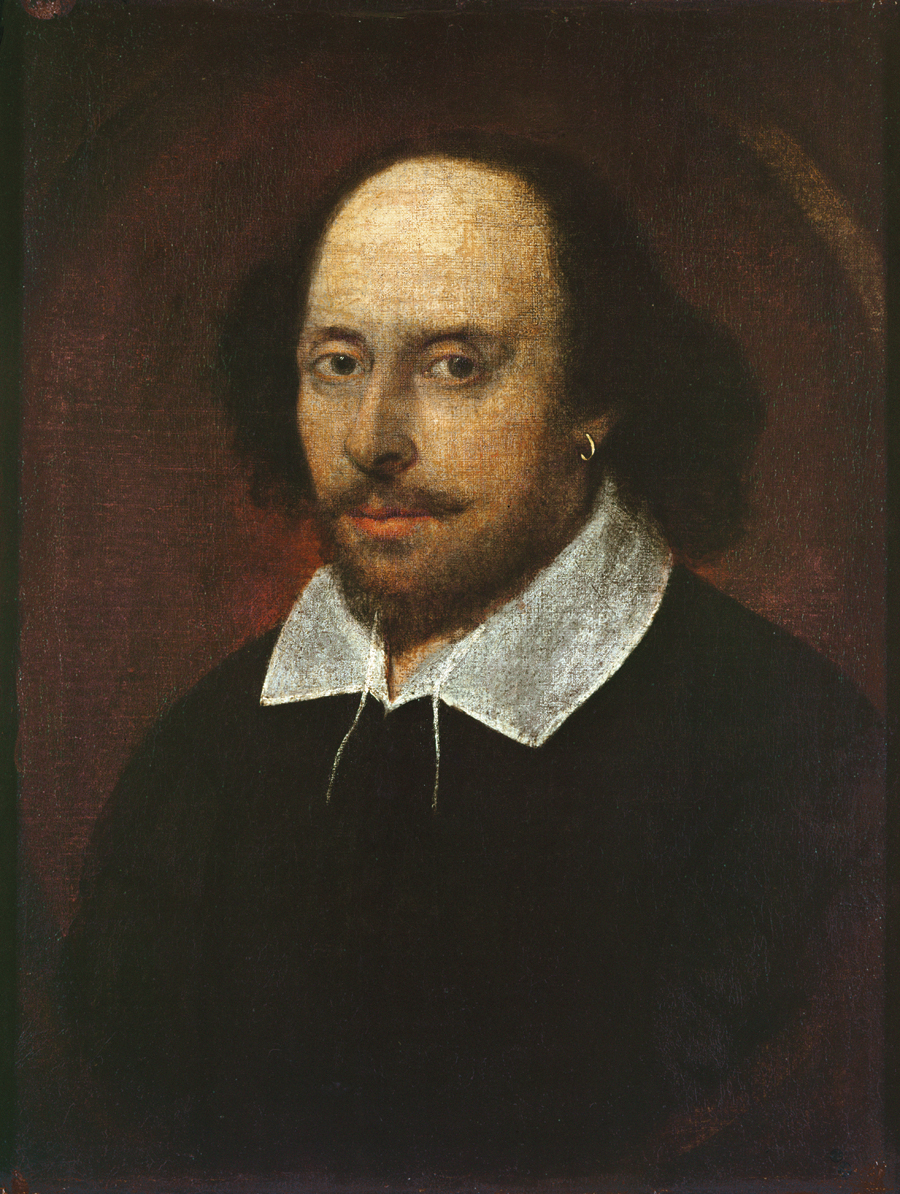
In 1576, James Burbage built England’s first playhouse, called The Theatre, in a suburb of London. Until this time, drama had been performed in the streets, on church grounds, in homes and palaces, and at universities. After Burbage’s theater, other playhouses opened and the popularity of drama rapidly increased.
Elizabethan drama was noted for its passion and vitality. Thomas Kyd’s play The Spanish Tragedy (1580’s) was one of the earliest Elizabethan dramas. It is filled with scenes of violence and madness and set a pattern for themes of murder and revenge in later plays.
A group of leading Elizabethan playwrights were known as the “University Wits” because they had attended the famous English universities at Oxford or Cambridge. These playwrights included Robert Greene, Christopher Marlowe, and George Peele. Marlowe was the most important dramatist among the Wits. He wrote tragedies that center on strong personalities. These works include Tamburlaine the Great (about 1587) and The Tragical History of Doctor Faustus (about 1588).
The greatest Elizabethan playwright was William Shakespeare. No other English author has equaled his brilliant verse and characterizations. For detailed information about his writings, see Shakespeare, William.
Elizabethan fiction.
The Elizabethan Age produced some of the first works of prose fiction in English. Readers especially liked fanciful, elaborately told stories of love and adventure. John Lyly popularized an artificial, elegant style in Euphues: The Anatomy of Wit (1578). Sir Philip Sidney wrote intertwining stories in Arcadia (1580). Thomas Nashe wrote in a more realistic style. In The Unfortunate Traveller (1594), he described the mischievous adventures of one of King Henry VIII’s pages.
The early and middle 1600’s
King James I, who ruled from 1603 to 1625, and his son Charles I, who took the throne in 1625, quarreled often with Parliament. Civil War broke out in 1642 between the king’s followers, called Cavaliers, and Parliament’s supporters, including many of the religious reformers known as Puritans. In 1648, Parliament’s supporters won the war. They beheaded Charles in 1649 and ruled England until 1660.
Metaphysical and Cavalier poets
were two major groups of poets during the 1600’s. The Metaphysical poets included the most accomplished poet of the period, John Donne. Other men closely connected to aspects of Donne’s style included Abraham Cowley, George Herbert, Andrew Marvell, and Henry Vaughan. The Cavalier poets, who were associated with the court of Charles I, included Ben Jonson, Thomas Carew, Robert Herrick, Richard Lovelace, and Sir John Suckling.
The Metaphysical poets used comparatively simple language, but they often created elaborate images called conceits. Donne wrote passionate love poetry, including “The Sun Rising,” “The Break of Day,” and “The Canonization.” When in 1615 he converted from Roman Catholicism to the Anglican faith and became an Anglican priest, Donne wrote equally passionate religious poetry. His many Holy Sonnets transfer the ecstasy of physical love into religious fervor. Several other Metaphysical poets also wrote religious verse, notably George Herbert, Richard Crashaw, and Henry Vaughan.
In contrast to the serious Metaphysical poets, the Cavalier poets were best known for their dashing love poetry. Herrick’s well-known poem “To the Virgins, to Make Much of Time” includes the famous opening line “Gather ye rosebuds while ye may.” A more serious Cavalier poem, John Denham’s “Cooper’s Hill” (1642), uses the territory around Surrey to make its political points about the upheavals of the time.
Loading the player...To His Coy Mistress by Andrew Marvell
Jacobean drama
is the name given to the plays written during the reign of James I. Jacobean tragedies reflected Elizabethan drama, especially in such characteristics as violent action, spectacle, and the revenge theme. John Webster’s drama The Duchess of Malfi (about 1613) is a masterpiece of revenge tragedy. Comic drama of the time tended toward the satiric. In The Knight of the Burning Pestle (1607?), for example, Francis Beaumont ridiculed earlier dramas and romances about elegant heroes and also satirized the newly rich merchant class. Beaumont teamed with John Fletcher to write more than 40 comedies and tragedies, the most famous being The Maid’s Tragedy (1609).
Ben Jonson wrote plays that showed the influence of ancient Roman drama. His comedies Volpone (1606) and The Alchemist (1610) satirize universal human failings, such as greed, ignorance, or superstition.
One of the most controversial plays of the period was John Ford’s ‘Tis Pity She’s a Whore (1632?), with its representation of sexual relations between a brother and a sister. In 1642, the British Parliament ordered the theaters closed as sites of wickedness. The order remained in effect for 18 years.
Prose writings.
In 1604, King James I authorized a group of scholars to prepare a new English version of the Bible. It appeared in 1611 and became known as the King James Version or Authorized Version. Although it borrowed from earlier translations, such as Tyndale’s, the King James Version was a landmark in the development of English prose. Its eloquent yet natural style had enormous influence on English-speaking writers.
Lady Mary Wroth, Sir Philip Sidney’s niece, continued the tradition of writing in her uncle’s elegant, artificial style. She combined prose and poetry in Urania (1621). Robert Burton’s The Anatomy of Melancholy (1621) was written as a psychological study of the causes, symptoms, and cures of melancholy, which Burton believed all people experienced. But at the same time Burton explored a wide range of human learning and activities.
Many authors wrote philosophical works during the early and mid-1600’s. Donne composed a series of meditations on sickness, sin, and death in Devotions upon Emergent Occasions (1624). Sir Thomas Browne, a physician, and Jeremy Taylor, an Anglican bishop, wrote works noted for their beautiful prose style. In Religio Medici (1642), Browne gave his learned opinions on a variety of subjects, including miracles and witchcraft. Taylor is best known for two religious essays, Holy Living (1650) and Holy Dying (1651). Thomas Hobbes published his brilliant work on political theory and practice, The Leviathan (1651). In contrast to these serious works, Izaak Walton wrote The Compleat Angler (1653), a light-hearted but thoughtful book on fishing.
John Milton
was the greatest English writer of the mid-1600’s. Milton was deeply involved in the political and religious debates of his time and supported the Puritans during the English Civil War. He wrote prose and verse on many subjects before, during, and after the war. Among these writings is an attack on censorship, Areopagitica (1644), in which Milton argued that knowledge and virtue can only grow when different opinions have a chance to be openly debated. The Tenure of Kings and Magistrates (1649) is a brilliant attack on the argument of the divine right of kings.
Loading the player...Milton's use of figure of speech
Milton’s greatest achievement is Paradise Lost (1667). The epic is based on the fall of the angel Lucifer (who becomes Satan in Hell) and the story of Adam and Eve. Its vivid descriptions of heaven, hell, and the Garden of Eden, and its rich and musical blank verse, make it one of the most admired and imitated works in English literature.
Restoration literature (1660-1700)
In 1660, Parliament restored the monarchy under Charles II. The period from 1660 to 1700 is known as the Restoration.
The Puritans had attempted to enforce a strict moral code during their years in power. The Restoration brought a strong reaction against this code, well represented in Samuel Butler’s Hudibras (published in three parts from 1663 to 1678). The work is one of the most popular verse narratives of the period and a hilarious mocking of Puritan rule. The nobility and upper class, in particular, became known for carefree and often morally loose living. Restoration writers reflected this relaxed morality in their works, notably in the witty and sex-filled poems by John Wilmot, the Earl of Rochester.
John Dryden
followed Milton as the outstanding literary figure of the age. Dryden wrote poetry, popular dramas, and literary criticism. His Essay of Dramatic Poesy (1668) is one of the most clearly written discussions of English and French drama. During his career, he shifted his support from the Puritans to the restored monarchy. Late in life, he converted from the Anglican faith to Roman Catholicism. Many of Dryden’s poems reflect these political and religious shifts. His political satire Absalom and Achitophel (1681) attacks the enemies of Charles II and the future James II. In The Hind and the Panther (1687), Dryden justified his conversion to Catholicism.
As a dramatist, Dryden’s best plays include Marriage à la Mode (1672), a comedy, and All for Love (1677), a tragedy. Dryden also wrote an ode called “To the pious memory . . . of Mrs. Anne Killigrew” (1686), recognizing that she was among the first women poets to gain a sufficient reputation to be published during the Restoration. Other women poets who published their work were Anne Finch, Countess of Winchilsea; and Katherine Philips.
Restoration drama.
After Charles II became king in 1660, the theaters reopened and an important period in English drama began. Two types of plays rapidly dominated Restoration stages: (1) the comedy of manners and (2) the heroic tragedy.
The comedy of manners
was witty, sometimes cynical, and occasionally indecent. It treated love and romantic intrigue in a light, often broadly humorous way. The best comedies of manners included The Country Wife (1675) by William Wycherley, The Man of Mode (1676) by George Etherege, and The Way of the World (1700) by William Congreve.
The heroic tragedy
had a complicated plot that dealt with the conflict between love and honor. Most of these plays were set far from England. Little action took place on the stage, though the settings were elaborate, and the characters spoke in elegant, noble-sounding heroic couplets. A heroic couplet is a verse form consisting of two rhymed lines of 10 syllables each. Dryden wrote several heroic tragedies, including The Conquest of Granada (in two parts, 1670, 1671).
Restoration prose.
During the Restoration, prose became less elaborate than had been fashionable earlier in the 1600’s. Writers tried to express themselves clearly, simply, and directly. Prose fiction as well as scientific and historical writing tried to address the world as it is rather than idealize or romanticize it.
Aphra Behn’s Oroonoko (first published about 1678) tells the story of an African prince sold into slavery who leads a tragic rebellion against his English captors. In the novel’s descriptive passages, Behn drew on her experiences in the English colony of Surinam. Her interest in factual, realistic background was new to English fiction.
John Bunyan wrote the popular Christian allegory The Pilgrim’s Progress (1678, 1684). The work traces the journey of its hero, Christian, through this world to the heavenly city of salvation in the world beyond. Although Bunyan’s themes are religious and moral and his writing is filled with metaphors for Christian experience, his style is rooted in the recognition of the physical world in which men and women of his time lived. The diaries of Samuel Pepys and John Evelyn are also vividly written. They provide a delightful and detailed view of English life in the late 1600’s.
The Augustan Age (1700-1750)
The period in English literature from 1700 to about 1750 is called the Augustan Age, named for the Roman emperor Augustus, who reigned from 27 B.C. to A.D. 14. English authors tried to imitate or recapture many of the philosophic and literary ideals of Augustan Rome. In particular, they admired the ideals of reason, proportion, and common sense, and they tried to achieve balance and harmony in their writings. The Augustan Age of English literature is also known as the Neoclassical period.
Swift, Pope, and Gay.
Satire was one of the most common types of literature during the Augustan Age. In spite of the Augustan emphasis on reason, many satires were extremely bitter and personal. The leading satirists were Jonathan Swift in prose, Alexander Pope in poetry, and John Gay in drama.
Swift attacked the politics, religion, science, and social life of his day in Gulliver’s Travels (1726), the most famous satire in English. In A Modest Proposal (1729), Swift, who was born and lived much of his life in Ireland, satirized the harshness and indifference that he saw, especially in England’s economic rule of Ireland. Swift was also a witty comic poet whose poem “Verses on the Death of Dr. Swift” (written in 1731 and published in 1739) is a mock eulogy with himself as the recently deceased subject.
Loading the player...
The Rape of the Lock by Alexander Pope
Pope perfected the heroic couplet, giving its two rhymed lines a quality of balance and wit that often echoed his themes. In The Rape of the Lock (1712-1714), he ridiculed fashionable society. In An Essay on Man (1733-1734), he advised readers to seek balance, avoid absurdities, and reject the irrational in all things. He wrote with especially cutting brilliance about the authors of his time and their weaknesses in The Dunciad (1728-1743). One of Pope’s most important nonsatirical poems is Windsor Forest (1713). It uses England’s Windsor forest as a symbol of social harmony, weaving patriotic reflections on history, politics, and morality into a description of the landscape.
Lady Mary Wortley Montagu wrote to Pope, a close friend at the time, and others when she travelled to the Near East from 1716 to 1718 with her husband, the ambassador to Turkey. A collection of letters describing her experiences, published in 1763, after her death, has become known as the Turkish Embassy Letters. Lady Mary was a sharp observer of all she saw during her travels, including methods for smallpox inoculations that were decades ahead of practices in England.
John Gay’s The Beggar’s Opera (1728) was among the most delightful satires on the English stage in the early 1700’s. Gay adapted the music of the day, both popular and operatic, into a story about a den of thieves led by the highwayman robber Macheath. Macheath’s actions bear directly on the government of England’s first prime minister, Robert Walpole, who was in power at the time. The Beggar’s Opera was adapted in the early 1900’s by Kurt Weill and Bertolt Brecht as The Threepenny Opera.
Addison and Steele.
Joseph Addison and Sir Richard Steele were the outstanding essayists of the Augustan Age. They published many of their essays in two periodicals, The Tatler (1709-1711) and The Spectator (1711-1712). Both writers described and criticized the social customs and attitudes of their day. Their essays helped form middle-class tastes in manners, morals, and literature. In addition, Addison’s pure and elegant prose style served as a model throughout the 1700’s.
The rise of the novel.
The development of the novel is one of the great achievements of English literature. With the novel, English prose fiction became more realistic and addressed a wider, middle-class audience. One of the major figures in the development was Daniel Defoe. Although Defoe wrote in many literary forms, he gained his greatest fame from realistic stories consisting of loosely connected incidents that were presented as actual happenings. Defoe’s Robinson Crusoe (1719) and Moll Flanders (1722) are early examples of the novel. These works are filled with the stuff of real life, even if they lack the unified plots that became typical of the novel later in the 1700’s.
Many scholars consider Samuel Richardson the first true novelist in English. He wrote epistolary novels, which take the form of letters exchanged between the novel’s characters. Richardson’s novels are highly moralistic and intricately structured. His first novel, Pamela (1740), tells about a servant girl whose virtuous refusal to be seduced by her master eventually leads him to marry her. Richardson’s masterpiece is Clarissa (1748), a tragic story of a young woman tricked into leaving her home and raped by a villainous nobleman. It is remarkable for the detailed exploration of the characters’ states of mind.
The novels of Henry Fielding and Tobias Smollett emphasize vigorous humor and satire. Fielding ridiculed Pamela in An Apology for the Life of Mrs. Shamela Andrews (1741). Fielding was a master at putting together a complex plot that could also contain observations on many subjects of the day. His Tom Jones (1749) is perhaps the greatest comic novel in English. Smollett’s The Expedition of Humphry Clinker (1771) is a humorous account of a family’s travels through England and Scotland.
Laurence Sterne was another leading novelist. His The Life and Opinions of Tristram Shandy, Gentleman (1760-1767) has almost no story. The narrator, Tristram, tries to write his life story but keeps breaking off to discuss other topics and to challenge the formal limitations of the novel. Sterne’s A Sentimental Journey Through France and Italy (1768) is another brilliant novel.
Mid-century poetry.
A more contemplative and natural poetry succeeded the satire of Swift and Pope. One of the most quoted poems of the period was James Thomson’s long, four-part The Seasons (1726-1730). William Collins published a series of important and deeply personal works, Odes on Several Descriptive and Allegoric Subjects (1747). Thomas Gray’s two meditative poems, “Ode on a Distant Prospect of Eton College” (1747) and “Elegy Written in a Country Churchyard” (1751) rank among the most nostalgic and emotionally self-contained in the English language. Mark Akenside’s long poem The Pleasures of Imagination (1744) attempts to link imaginative experience to philosophical observations. Edward Young’s five-part poem The Complaint (1742-1745) meditates on death and immortality.
The Age of Johnson (1750-1784)
Samuel Johnson
dominated English literature from about 1750 until his death in 1784. He was as famous for his conversation—in which he sometimes voiced outrageous opinions—as he was for his writings.
Johnson’s literary achievements are remarkable. His Dictionary of the English Language (1755) is noted for its scholarly definitions of words and the use of excellent quotations to illustrate the definitions. In The Lives of the English Poets (1779-1781), Johnson critically examined the work of 52 poets and did much to establish literary criticism as a form of literature. Johnson also wrote articles, reviews, and essays, publishing many of his famous pieces in the periodical The Rambler. As a poet, John son’s imitation of the classical satirists in London (1738) and The Vanity of Human Wishes (1749) is beautifully crafted. His prose work Rasselas (1759) is a philosophical attack on people who seek too easy a path to happiness.
The Johnson circle.
Johnson’s friends were the most important writers of the late 1700’s. They included Oliver Goldsmith; Richard Brinsley Sheridan; Edmund Burke; and Johnson’s biographer, James Boswell.
Goldsmith’s novel The Vicar of Wakefield (1766) tells about the misfortunes of a kindly clergyman and his family. The Deserted Village (1770) is a poem that movingly describes the decline of an English village. Goldsmith’s great play is the classic comedy She Stoops to Conquer (1773). Sheridan wrote two clever comedies of manners, The Rivals (1775) and The School for Scandal (1777). Burke composed essays on government, history, and beauty. His Philosophical Enquiry into the Origin of Our Ideas of the Sublime and Beautiful (1757) anticipates many ideas of Romantic writers of the 1800’s. His attack on the French Revolution, Reflections on the Revolution in France (1790), quickly became one of the most influential books on politics ever written. Burke’s dislike of revolution is obvious, but others of his writings on Ireland, America, and India reveal him to be a nuanced commentator on the political rights of oppressed nations.
Fanny Burney became part of Johnson’s circle through her father, the music historian Dr. Charles Burney. In such novels as Evelina (1778) and Cecilia (1782), she combined Richardson’s moral concerns and psychological insight with Fielding’s satirical, humorous tone. Boswell brilliantly recorded Johnson’s eccentricities and witty conversations in The Life of Samuel Johnson (1791), one of the great biographies in literature.
Ignatius Sancho was the first African prose writer published in England. Sancho was born on a slave ship on its way to America. When he was 2 years old, he was taken to England. Sancho was especially admired as a letter writer. His Letters (1782) were published two years after his death. During the late 1700’s and early 1800’s, several former slaves wrote memoirs of their experiences, notably Olaudah Equiano’s The Interesting Narrative of the Life of Olaudah Equiano (1789). Equiano offers a vivid account of his childhood, enslavement, and eventual freedom.
Romantic literature (1784-1832)
English writers of the late 1700’s and early 1800’s believed that the Augustan ideals of harmony and moderation were narrow and artificial. These writers are called Romantics. The Romantics emphasized the creative power of the human imagination and placed increasing value on private experience and the natural world.
In 1789, the French Revolution began, and from 1792 through 1815, England was often at war with France. Romantic writers responded to these events with a complex mixture of sympathy for the democratic ideals of the revolution and patriotic support for the English war effort. England’s colonial interests overseas also grew at this time, and many of the most popular Romantic works were set in distant lands associated with those interests.
The Preromantics
is the name given to a group of poets of the mid-1700’s whose work first touched on important Romantic themes and ideas. Their writing reflected the awareness of social problems, the love of nature, and the fascination with myth and mystery that became typical of Romanticism.
The Scottish poet Robert Burns wrote about rural characters. He often used Scots dialect. Burns’s most popular verses include “Auld Lang Syne” (about 1788) and “Comin Thro’ the Rye” (about 1796). His poem “To a Mouse” (1785) contains the famous lines, “The best-laid schemes o’ mice an’ men/Gang aft agley.”
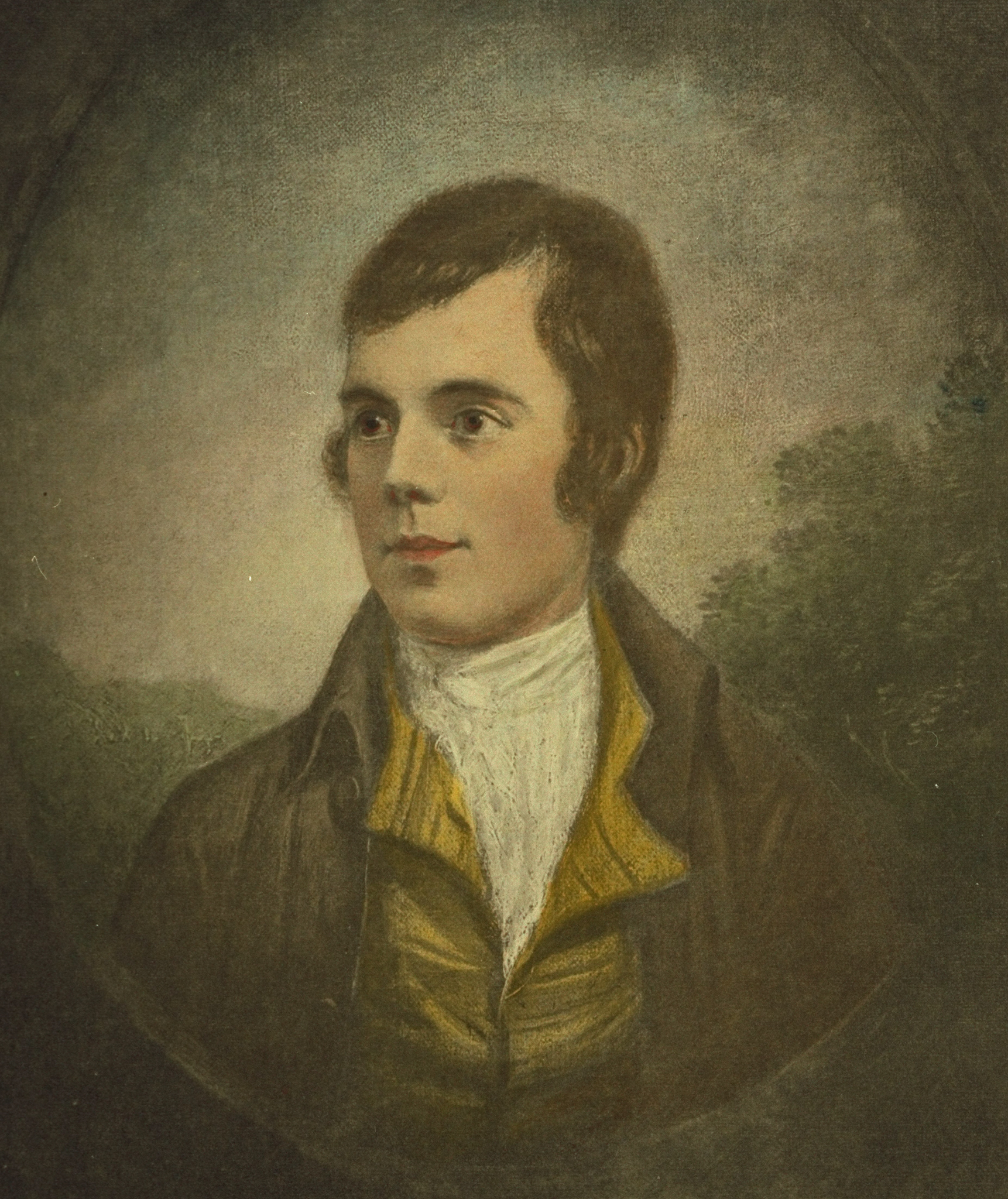
William Cowper was a poet of the late 1700’s who was a particular favorite of the later Romantics. His portrayal of English life in his famous long poem The Task (1785) brings poetry into the realm of the ordinary and natural. Another key Preromantic was George Crabbe, whose long work The Village (1783) focused on the misery and poverty of rural people whose difficult lives interested Romantic writers.
The leading Preromantic poet was William Blake. Blake was an important printer and engraver as well as a poet. His plates for illustrating Dante’s Divine Comedy and Milton’s Paradise Lost are particularly striking. All his work expresses an intensely personal vision, especially his long mythological poems The Four Zoas (written about 1796-1808, first published 1893), Milton (about 1804-1810), and Jerusalem (about 1804-1820). His prose collection of biblical-like proverbs and prophecies, The Marriage of Heaven and Hell (about 1793) was, like many of his works, published in separate sheets with hand-tinted illustrations. Many of his most direct lyrics are collected in Songs of Innocence (1789) and Songs of Experience (1794). His poetry combines anger at the social injustices of his time with richly imagined portraits of a freer, more just society.
Romantic poetry.
William Wordsworth and Samuel Taylor Coleridge were the first major English Romantic poets. They produced a joint volume of poems titled Lyrical Ballads (1798). Wordsworth’s preface to the second edition (1800 and expanded in 1802) is an important statement of Romantic ideas about the continuing value of poetry. He explained that his poetry used everyday language rather than the elevated poetic language of such earlier writers as Dryden and Pope because everyday language comes closer to expressing genuine human feeling. For the same reason, he wanted to write about everyday topics, especially rural, unsophisticated subjects.
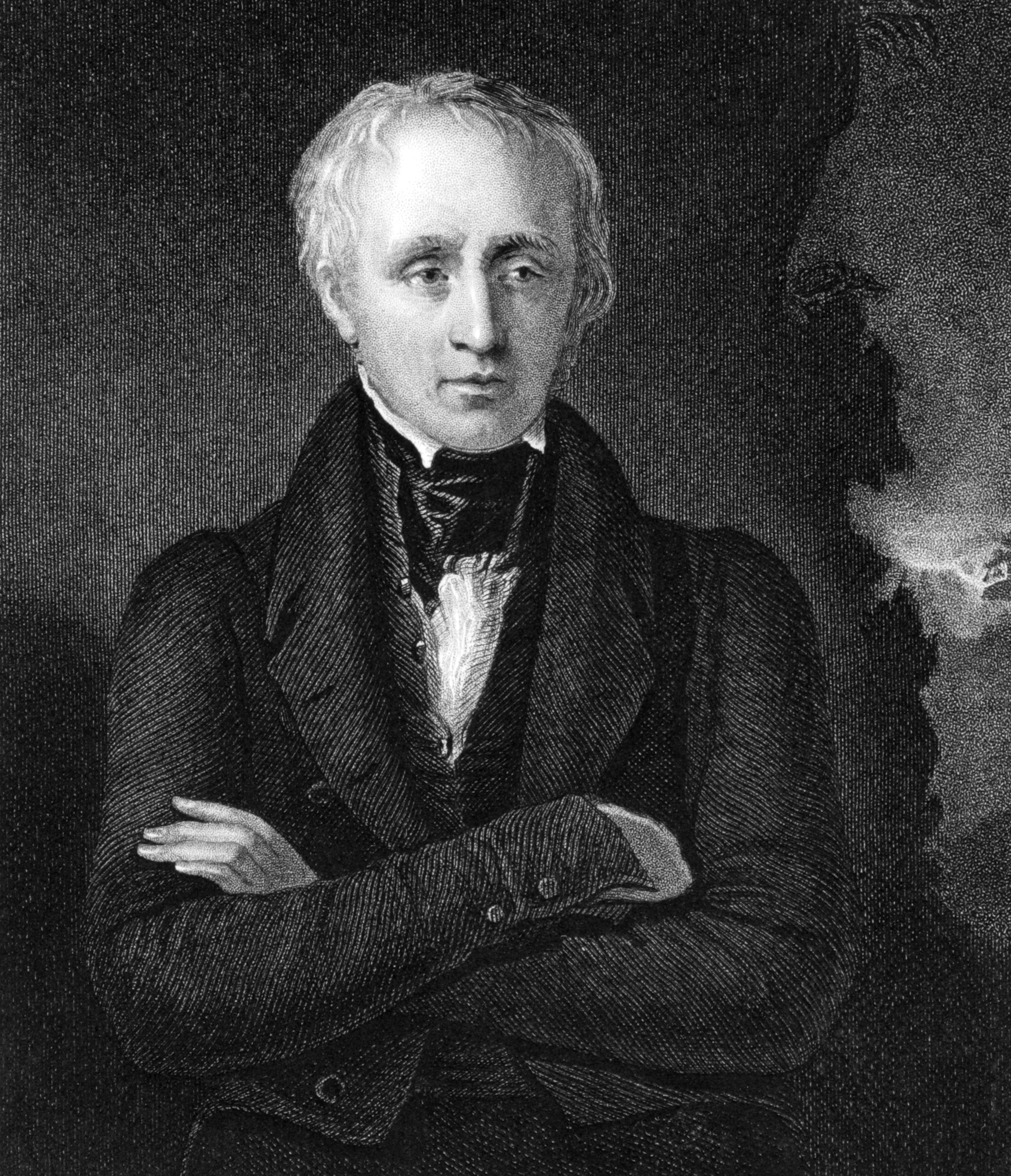
Wordsworth and Coleridge lived most of their lives in the scenic Lake District of northwestern England and wrote expressively about the beauty of nature and the thoughts that natural beauty inspires. Many of their most important poems are written in a meditative, conversational tone new to English poetry. Wordsworth’s “Tintern Abbey” (1798) is a particularly influential example.
Wordsworth’s longer poems also emphasize not only the settings that inspired him but the mind of the poet in relation to time and space, which Wordsworth called “spots of time.” His memories of his childhood and his experiences in France during its revolutionary period are the subject of his great autobiographical poem in blank verse, The Prelude, published in 1850, shortly after his death.
Coleridge’s most famous poems are “The Rime of the Ancient Mariner” (1798) and “Christabel” (written in 1799 and 1800 but not published until 1816). Both deal with supernatural subjects but try to inject qualities of psychological realism. Coleridge was also an important literary critic and philosopher. In Biographia Literaria (1817), he argued that the imagination is the active power in the creation of human experience.
Loading the player...Epigram by Samuel Taylor Coleridge
The next generation of Romantic poets included Lord Byron, Percy Bysshe Shelley, and John Keats. They criticized Wordsworth and Coleridge for giving up on the ideals of the French Revolution. These poets were interested in reviving classical subject matter in the manner of Renaissance poets. Byron and Shelley especially admired the ideal of ancient Greek democracy, and Byron died participating in the fight for Greek independence. 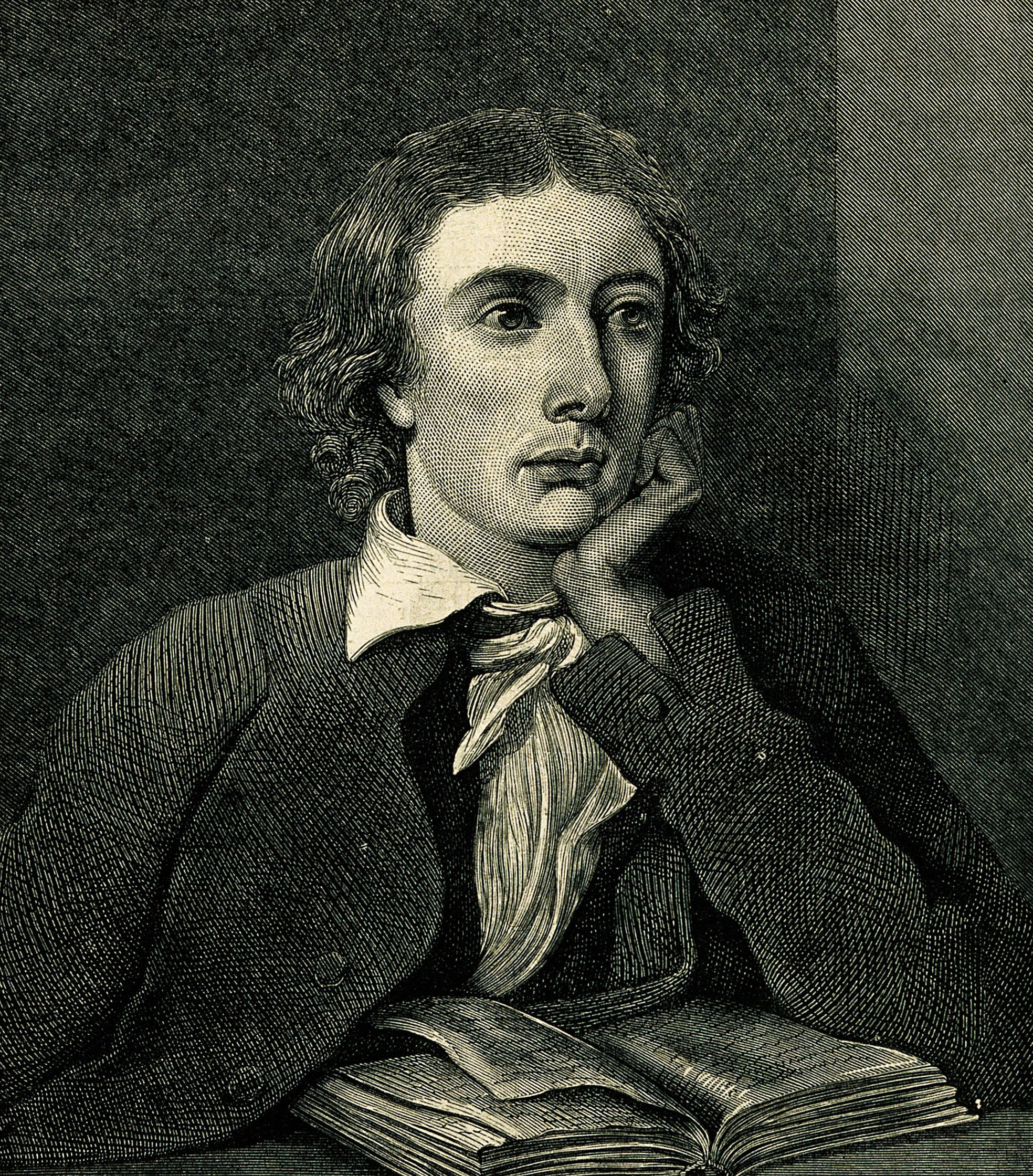
Byron wrote a series of “Eastern” tales set mainly in Turkey and Greece. He created a partly autobiographical hero in such lengthy works as Childe Harold’s Pilgrimage (1812-1818) and the unfinished Don Juan (1819-1824). While much of Byron’s poetry is dark and self-dramatizing, Don Juan is written in a comic style. The poem makes fun of many aspects of society, including Byron’s own success as a celebrity author.
Shelley was an idealist and social reformer. He wrote poetry that was both politically involved and intensely lyrical. Two of his famous lyrics are “Ozymandias” (1818), about the remains of an Egyptian pharaoh’s statue, and “To a Skylark” (1820), about the rhapsody of a bird’s song. Many of his poems call for political and social reforms in language that is melodious and complex. In his long drama Prometheus Unbound (1820), Shelley argued that reform needs to be based on inner transformation. For the world to change, people’s beliefs must change. Shelley’s Defence of Poetry (written in 1821 and published in 1840, after his death) is a key piece of literary criticism, arguing that poets are the “unacknowledged legislators of the world.” 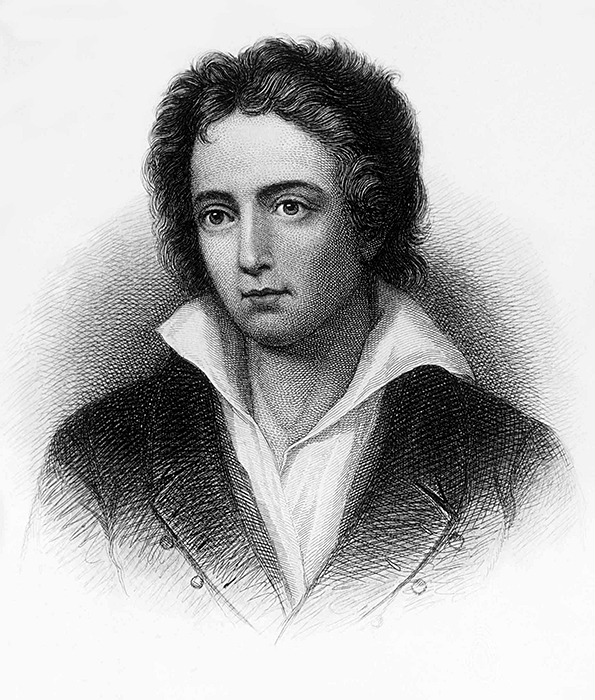
John Keats wrote intense, vivid poems that capture the experience of beauty and its inevitable passing. He wrote several famous odes in 1819, among them “Ode on a Grecian Urn,” “Ode to a Nightingale,” and “To Autumn.” He died at the age of 25 and never completed his epic poem “Hyperion,” about the clash between the older and newer orders of Greek gods.
Romantic prose
included essays, criticism, journals, and novels. During the 1790’s, many important prose works were written in response to the French Revolution. They included Mary Wollstonecraft’s A Vindication of the Rights of Men (1790), which supported the revolution against Edmund Burke’s attacks. Wollstonecraft also wrote one of the first feminist works, A Vindication of the Rights of Woman (1792). In it, she argued for a woman’s right to education and independence.
The leading Romantic essayists were Thomas De Quincey, William Hazlitt, and Charles Lamb. De Quincey’s Confessions of an English Opium Eater (1821) is typical of the personal, revealing essay that was popular during the early 1800’s. Hazlitt wrote outstanding critical studies of English literature. His writings helped revive interest in the plays of the Elizabethan Age. He also wrote political and personal essays in a sparkling, forceful prose that seems to speak directly to his readers. Lamb’s warm, humorous essays were collected in Essays of Elia (1823) and Last Essays of Elia (1833).
Horror stories called Gothic novels became popular during the late 1700’s and early 1800’s. Most of these tales deal with supernatural or seemingly supernatural events. Horace Walpole wrote the first Gothic novel, The Castle of Otranto (1764). Another Gothic novelist, Ann Radcliffe, used detailed landscape descriptions in The Mysteries of Udolpho (1794) to show her characters’ mood and attitude. Mary Wollstonecraft Shelley, the daughter of Mary Wollstonecraft and the wife of Percy Bysshe Shelley, wrote Frankenstein (1818), one of the most daring and popular Gothic novels. Another fine novel in the Gothic tradition is Charles Maturin’s Melmoth the Wanderer (1820).
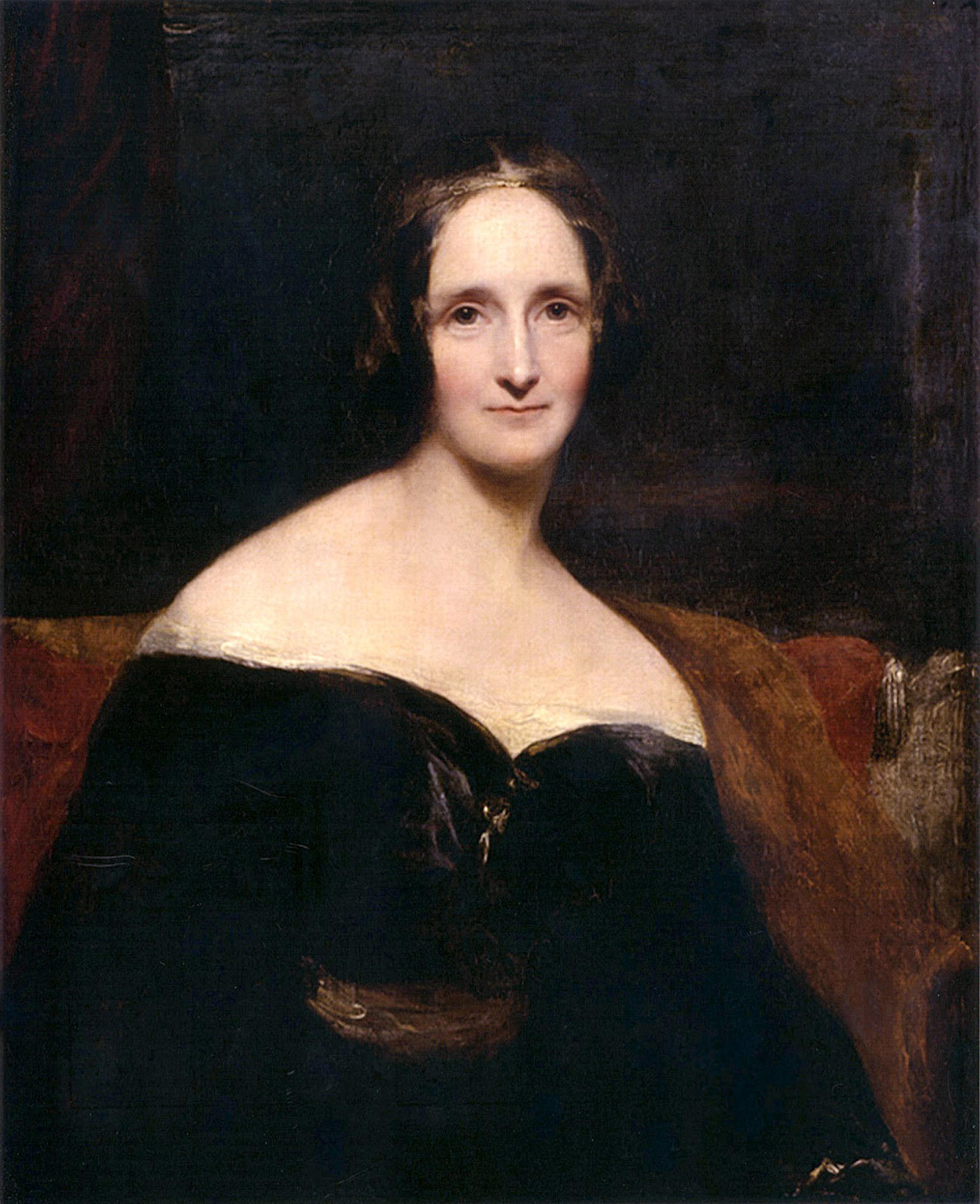
The two greatest novelists of the Romantic period were Jane Austen and Sir Walter Scott. Austen wrote about middle-class life in small towns and in the famous resort city of Bath. Her writing is elegant and playful, but below the surface it has exceptional intelligence and satiric power. The heroines in such Austen novels as Pride and Prejudice (1813) and Emma (1816) are known for their independence and wit.
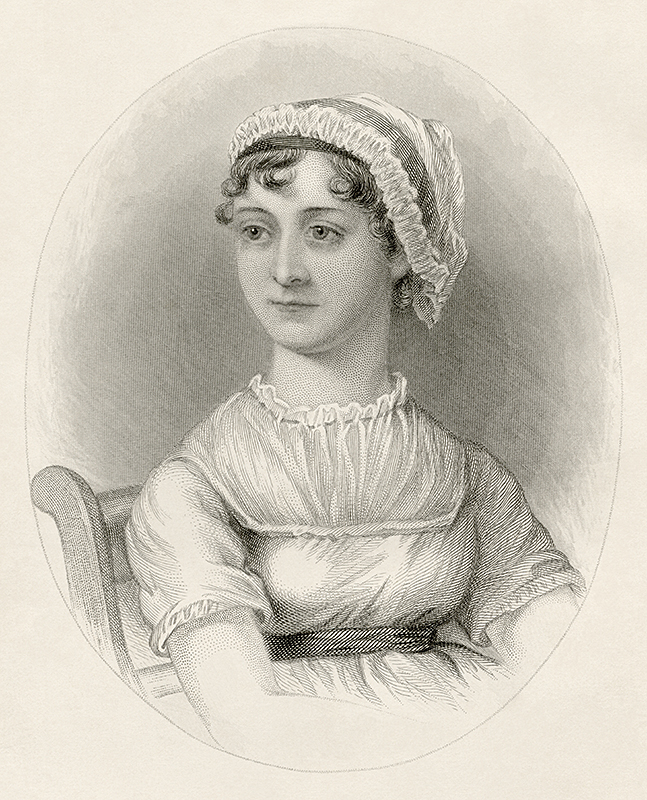
Scott wrote many novels that take place in the Scottish Highlands or Edinburgh, Scotland, such as Waverley (1814) and Rob Roy (1817). He also used historical settings to comment on important issues of his time, as in The Heart of Midlothian (1819), where he focuses on political unrest and public punishment. These are the first truly historical novels in English literature.
Victorian literature (1832-1901)
Victoria became queen of the United Kingdom in 1837. Her reign, one of the longest in English history, lasted until 1901. This period is called the Victorian Age.
During the Victorian Age, the British Empire reached its height and covered about a fourth of the world’s land. Industry and trade expanded rapidly, and railroads and canals crisscrossed the country. Science and technology made great advances. The middle class grew enormously. In spite of this prosperity, factory laborers and farmworkers lived in terrible poverty.
The Victorian Age’s new scientific theories seemed to challenge many religious beliefs. The most controversial theory appeared in The Origin of Species (1859) by the naturalist Charles Darwin. In the book, he stated that every species of life develops from an earlier one, which seemed to contradict the Biblical account of the creation of life. The theories of Darwin and other scientists led many people to feel that traditional values could no longer guide their lives.
Victorian writers dealt with the contrast between the prosperity of the middle and upper classes and the wretched condition of the poor. In the late 1800’s, they also analyzed the loss of faith in traditional values.
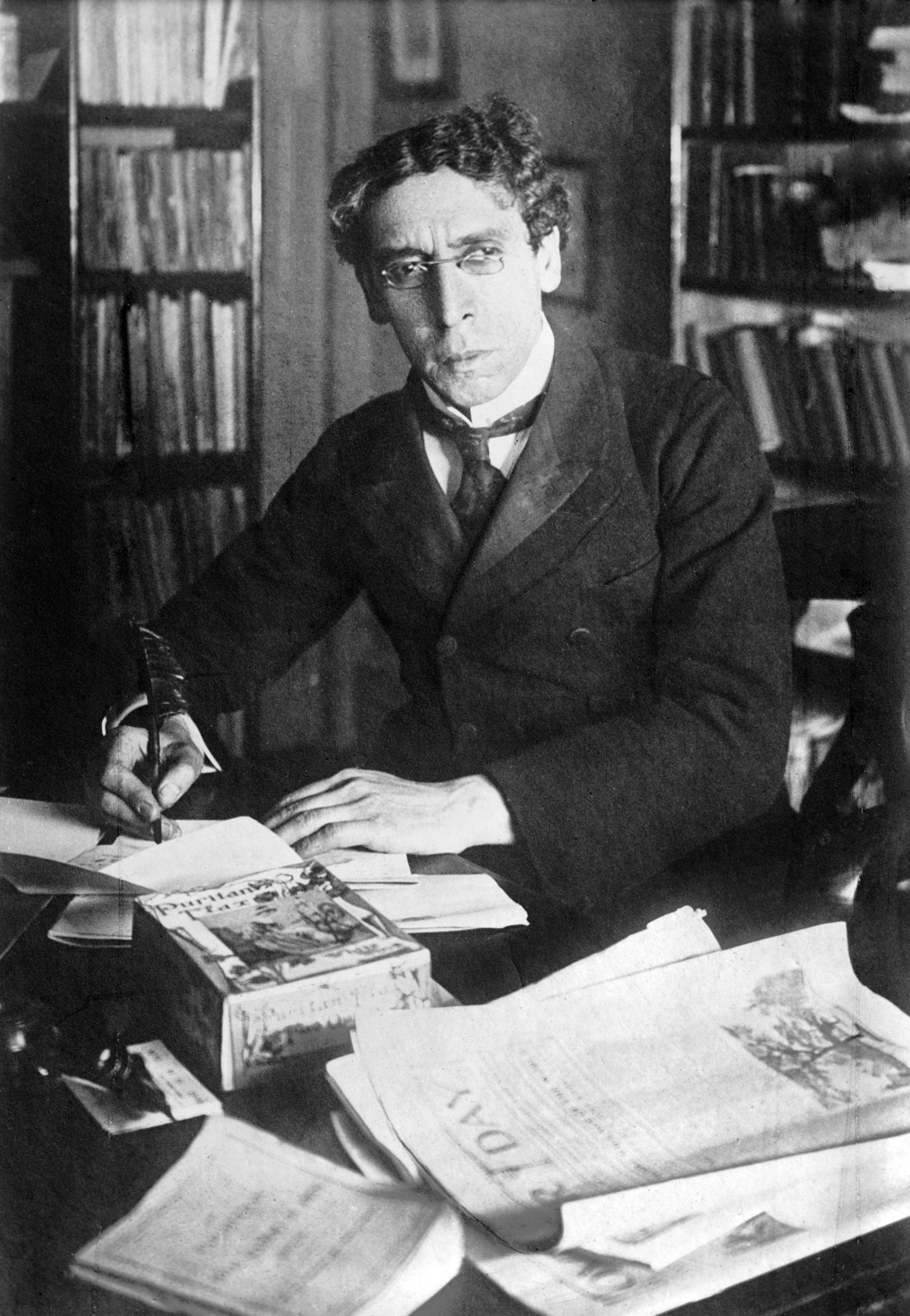
Early Victorian literature
includes some of the greatest and most popular novels ever written. Most novelists of the period wrote long works with numerous characters. In many instances, the authors included actual events of the day in their tales.
The novels of Charles Dickens are noted for their colorful—and sometimes eccentric—characters. In Oliver Twist (1837-1839) and David Copperfield (1849-1850), Dickens described the lives of children made miserable by cruel or thoughtless adults. Many of his later novels picture the grim side of Victorian life. In Bleak House (1852-1853), Dickens criticized the courts, the clergy, and the upper class for their neglect of the poor. His novels often balance harsh social criticism with satirical humor, idealized heroines, and sentimental scenes of family life.
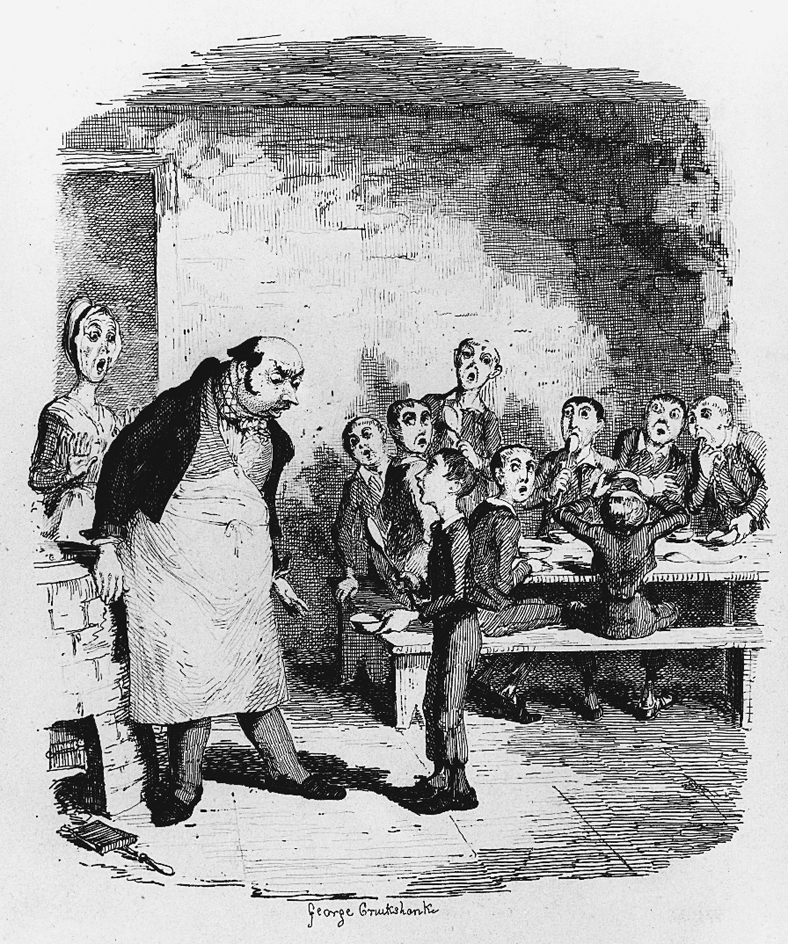
William Makepeace Thackeray created a masterpiece of Victorian fiction in Vanity Fair (1847-1848). The story follows the lives of many characters at different levels of English society during the early 1800’s.
The novels of the three Brontë sisters—Emily, Charlotte, and Anne—have many Gothic and Romantic elements. The novels are known especially for their psychologically tormented heroes and heroines. Emily’s Wuthering Heights (1847) and Charlotte’s Jane Eyre (1847) are among the best-loved works of Victorian fiction.

Elizabeth Gaskell wrote about confrontations between factory workers and owners in Mary Barton (1848) and North and South (1854-1855). She also wrote an important biography of Charlotte Brontë (1857).
Several writers wrote nonfiction that dealt with what they believed to be the ills of the time. For example, Thomas Carlyle attacked materialism and hypocrisy in Sartor Resartus (1833-1834), a work that combines fiction and philosophy. John Stuart Mill discussed the relationship between society and the individual in his long essay On Liberty (1859). In a later essay, The Subjection of Women (1869), he argued that women should have the same political rights as men.
Later Victorian literature.
During the late 1800’s, an uneasy tone appeared in much of the best Victorian poetry and prose. Matthew Arnold described his doubts about modern life in such poems as “The Scholar-Gypsy” (1853) and “Dover Beach” (1867). His most important literary achievements are his critical essays on culture, literature, religion, and society. Many of them were collected in Culture and Anarchy (1869).
John Ruskin and Walter Pater were other important critics. Ruskin was a major critic of painting and architecture. In Unto This Last (1862), Ruskin argued that the modern industrial economy was ruining England. He believed that the Middle Ages offered more humane and spiritually satisfying ideals because they allowed for individual development and craftsmanship. Pater’s Studies in the History of the Renaissance (1873) is a collection of his essays about Renaissance writers and painters.
Alfred, Lord Tennyson and Robert Browning were the two most important late Victorian poets. In In Memoriam (published in 1850), Tennyson tried to reconcile traditional Christian faith with modern science as he mourned the death of his friend Arthur Hallam. Tennyson’s narrative poem Idylls of the King (1842-1885) returned to medieval legends of King Arthur and his knights.
Loading the player...In Memoriam by Lord Tennyson
Browning created finely drawn character studies in poems called dramatic monologues. In these poems, a real or imaginary character narrates the story. Among the best of these monologues are “My Last Duchess” (1842) and “The Bishop Orders His Tomb at St. Praxed’s Church” (1845). Browning’s best-known work is The Ring and the Book (1868-1869). He based the poem on an Italian murder case of 1698. Twelve characters discuss the case, each from his or her own point of view. Elizabeth Barrett Browning, Browning’s wife, wrote a famous sequence of love poems called Sonnets from the Portuguese (1850). In her long “novel in verse” Aurora Leigh (1857), she commented on the social role of women and poetry in the 1800’s.
Loading the player...If Thou Must Love Me by E. B. Browning
The Pre-Raphaelites were a group of poets and painters who followed Ruskin and took their inspiration from the Middle Ages. The most important Pre-Raphaelite poet, Dante Gabriel Rossetti, was also an important painter. His partly autobiographical sonnet sequence The House of Life (1881) draws connections between experiences of love, death, and art. Algernon Charles Swinburne, Rossetti’s friend, was a poet of great technical talent whose subject matter tested the erotic and decadent limits of the Victorian Age. His Poems and Ballads (1866) caused much comment, and he remained controversial for the rest of the 1800’s.
Gerard Manley Hopkins wrote experimental religious verse. His poems were not published until 1918, almost 30 years after his death. Hopkins filled his poetry with rich word pictures and unusual word combinations. The “Terrible” sonnets (written in 1885) express experiences of extreme spiritual loneliness and suffering. He is known for a practice called “sprung rhythm,” in which a line’s first syllable is always stressed. Good examples are his poems “Pied Beauty” and “The Windhover” (both written in 1877 and published in 1918, after his death).
Loading the player...Pied Beauty by Gerard Manley Hopkins
A. E. Housman was a poet of the late 1800’s and early 1900’s. His reputation was established by the 63 poems in his self-published collection A Shropshire Lad (1896).
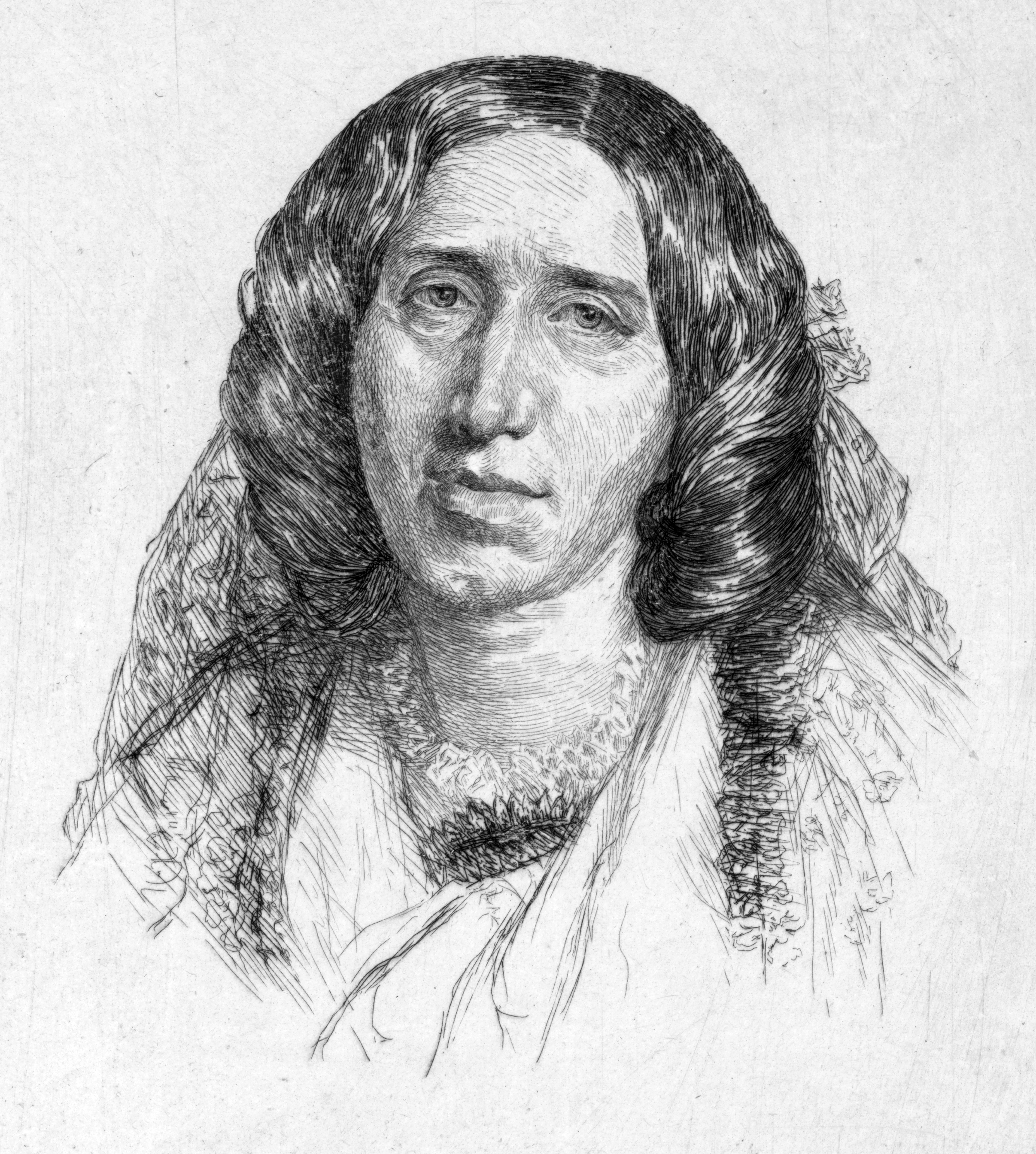
The leading late Victorian novelists were George Eliot (the pen name of Mary Ann Evans), Wilkie Collins, George Meredith, Anthony Trollope, Robert Louis Stevenson, and Thomas Hardy. Eliot’s novels address social and moral problems and are considered masterpieces of realism. Her most important works are Middlemarch (1871-1872) and Daniel Deronda (1876). Collins wrote stories of crime and suspense. His book The Moonstone (1868) is one of the first mystery novels.
Meredith’s novels are noted for their witty style and sophisticated psychological treatment of character. His works include The Ordeal of Richard Feverel (1859) and The Egoist (1879). The six “Barsetshire Novels” of Trollope are satires of life in rural England. They often tell of conflicts within the Church of England, usually in a humorous way. Trollope also wrote a series of “Palliser Novels” about an aristocratic family deeply involved in English political life.
Stevenson wrote his adventure novels Treasure Island (1883) and Kidnapped (1886) for young adult readers and his horror story The Strange Case of Dr. Jekyll and Mr. Hyde (1886) for more sophisticated readers. Two other narratives intended for children have attracted attention from mature readers, Lewis Carroll’s Alice’s Adventures in Wonderland (1865) and Through the Looking-Glass (1872).
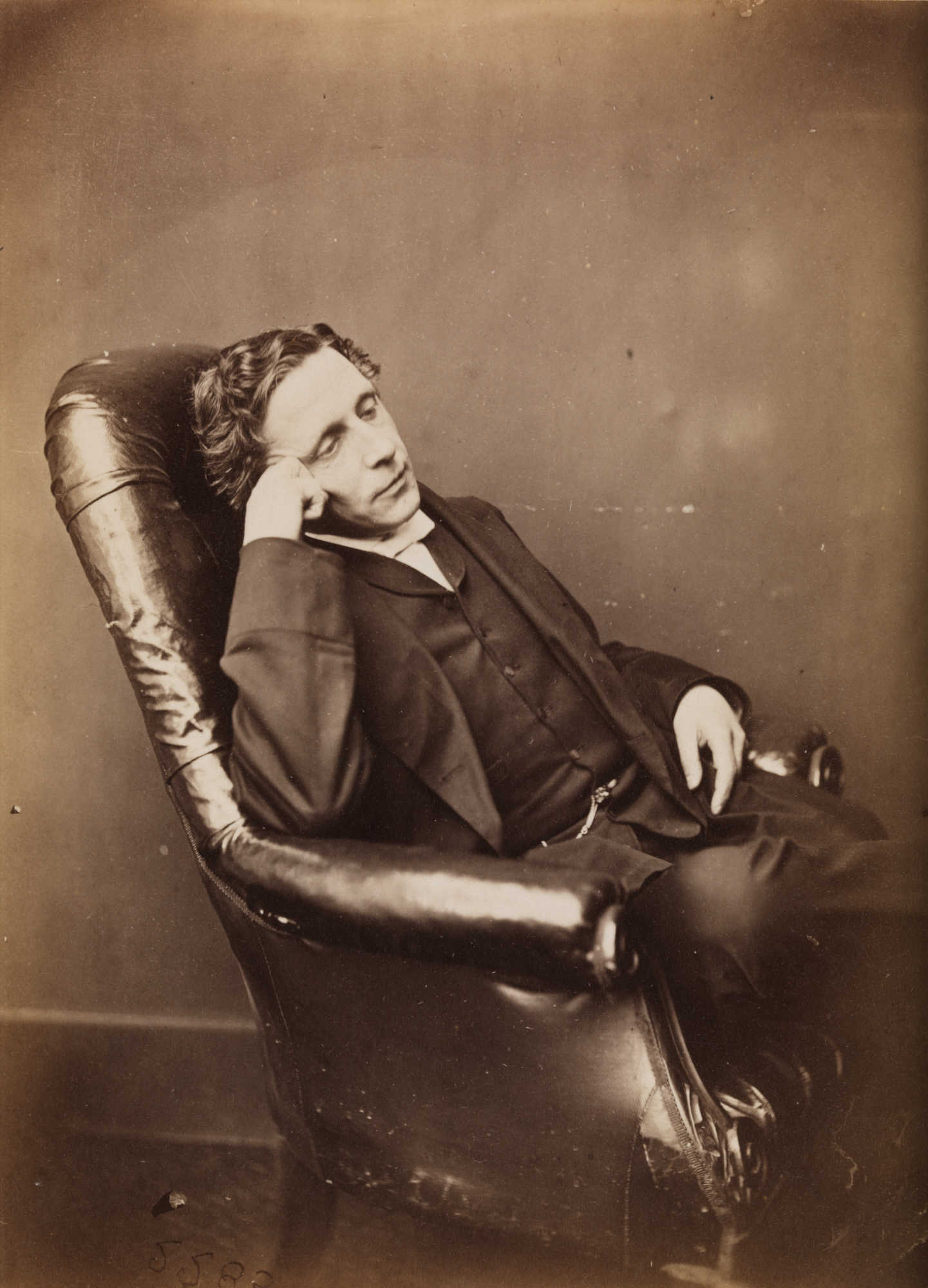
Hardy wrote about characters defeated by an apparently hostile fate. He used the landscape of the imaginary county of Wessex to help create the brooding atmosphere of such novels as The Mayor of Casterbridge (1886), Tess of the d’Urbervilles (1891), and Jude the Obscure (1895). Hardy ceased writing novels at the end of the 1800’s and turned exclusively to poetry. His Poems of 1912-13, published in 1914, includes what many scholars consider his best work.
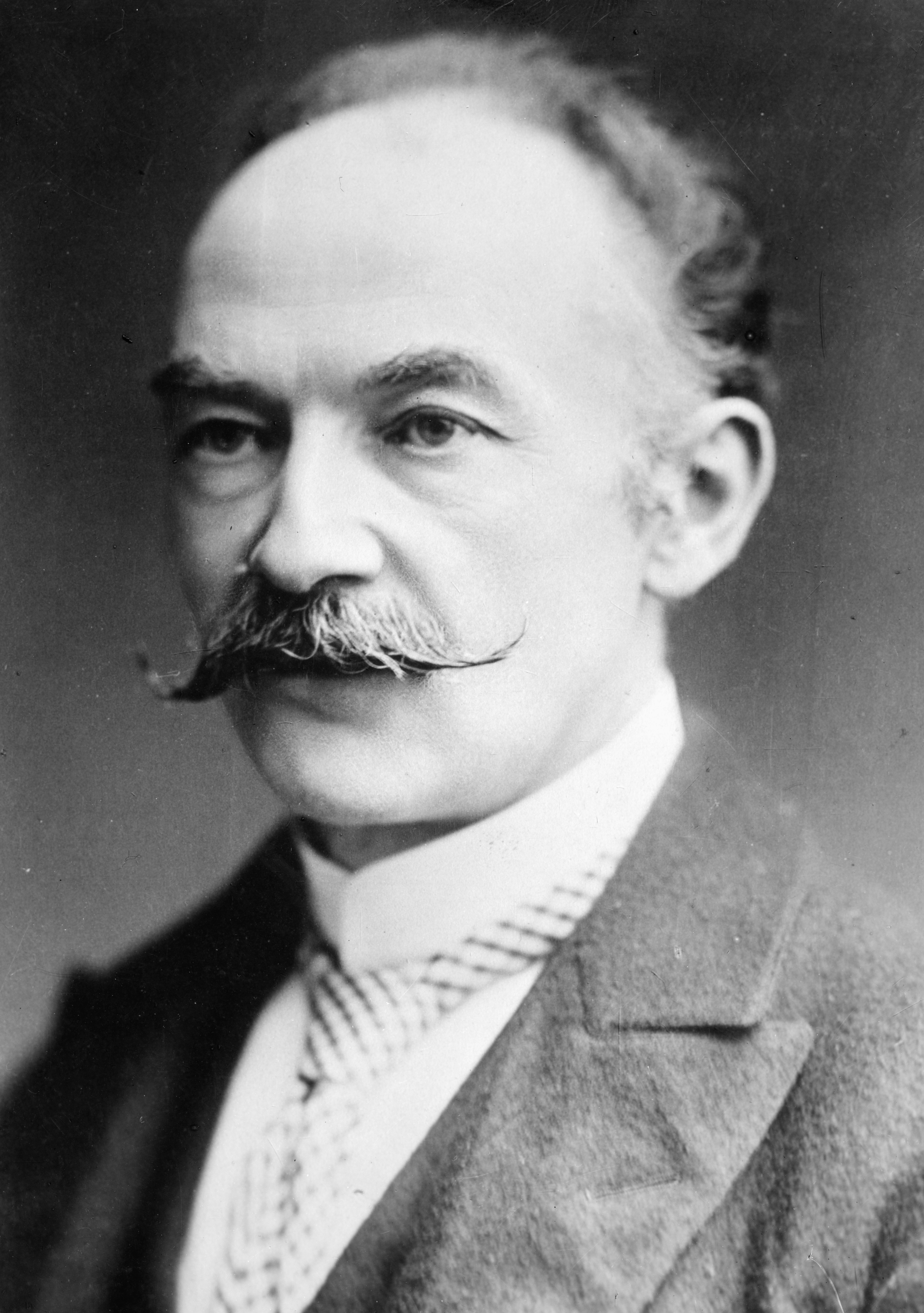
From the late 1700’s to the late 1800’s, almost no important dramas were produced in England. But by 1900, a number of playwrights had revived the English theater, both with witty comedies and with realistic dramas about social problems of the time.
Oscar Wilde recalled the glittering Restoration comedy of manners in The Importance of Being Earnest(1895). George Bernard Shaw wrote plays exposing the faults he saw in society. Shaw, like Wilde an Irishman who settled in England, addressed England’s relation to Ireland in the play John Bull’s Other Island (1904). Shaw’s other well-known plays include Mrs. Warren’s Profession (writ ten 1893, produced 1902), Man and Superman (1905), Major Barbara (1905), Pygmalion (1913), and Saint Joan (1923).
Literature before and after the world wars
Literature before World War I.
Several outstanding authors gained fame during the period that began with Queen Victoria’s death in 1901 and ended with the outbreak of World War I in 1914. A number of these authors wrote novels and plays of social criticism. Late in the period, a group of poets returned to the values of the Romantics, writing verse in the style of Wordsworth.
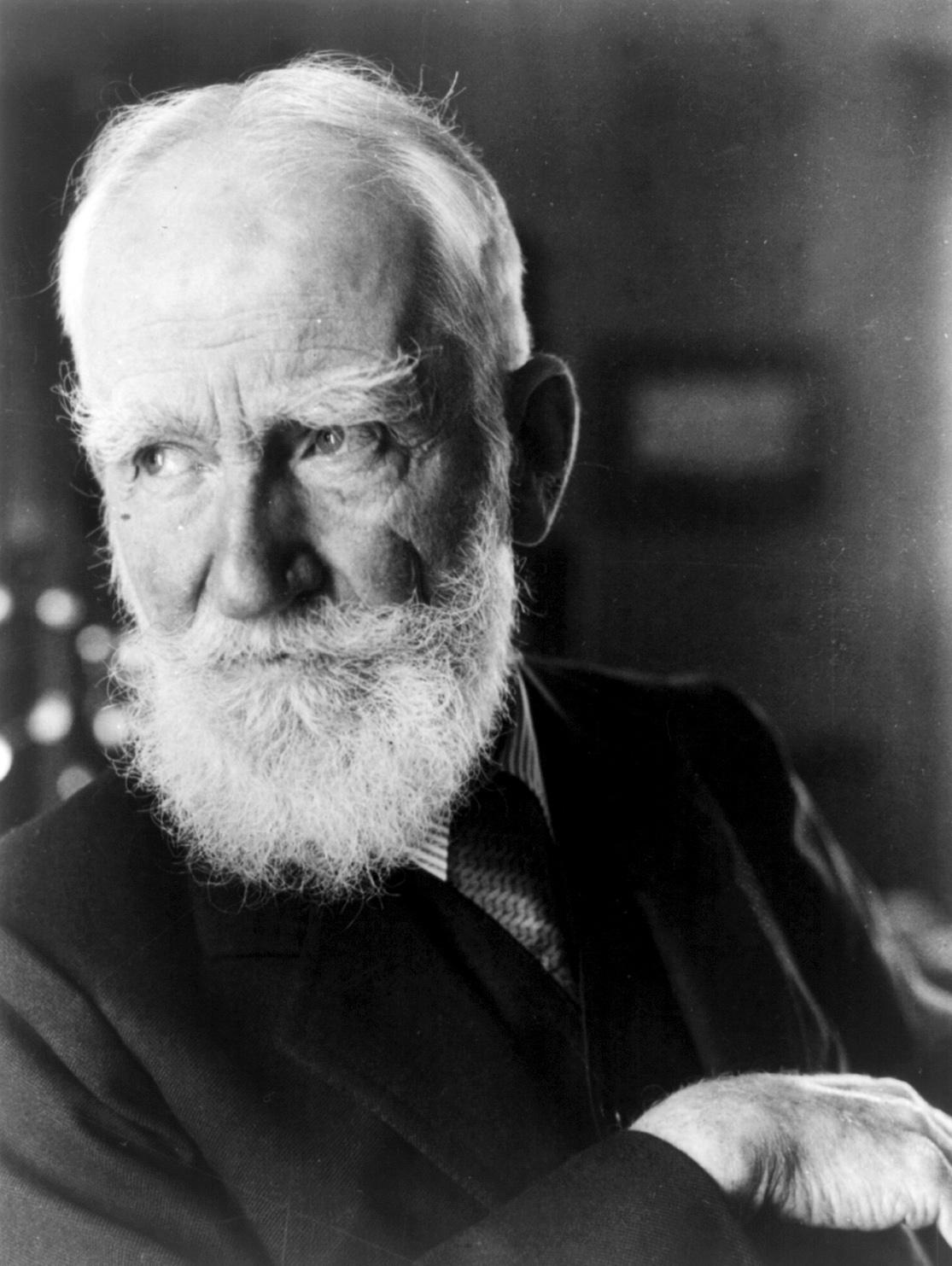
After Victoria died, her oldest son became King Edward VII. The term Edwardian is often applied to the period of Edward’s reign—1901 to 1910. The leading Edwardian novelists included Arnold Bennett, John Galsworthy, and H. G. Wells. In The Old Wives’ Tale (1908) and other realistic novels, Bennett wrote about the dull, narrow lives of the middle class in the small towns of central England. Galsworthy wrote The Forsyte Saga (1906-1921) about the problems of a large, upper middle-class family in London. Wells became famous for The War of the Worlds (1898) and other science-fiction novels. However, he also wrote political and satirical fiction. Shaw continued to attack uncritically accepted social values in such plays as Major Barbara (1905) and The Doctor’s Dilemma (1906).
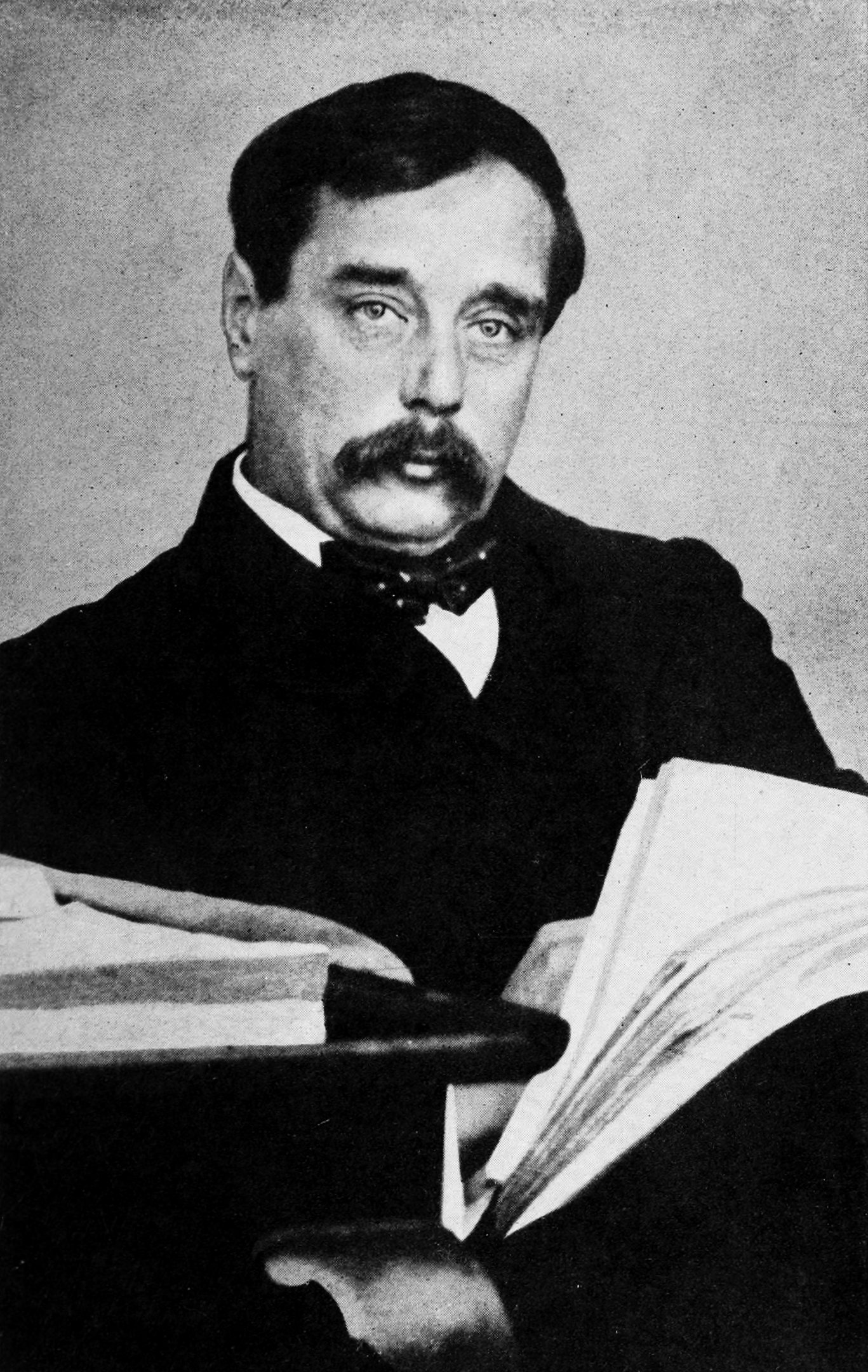
Joseph Conrad, a Polish writer who only learned English in his 20’s, wrote probing novels on such themes as guilt, heroism, and honor. Many of his short stories and novels depict life at sea and show insight into the physical and psychological impact of imperialism. His short novel “Heart of Darkness” (1899) is a horrifying account of colonial practices in Africa.
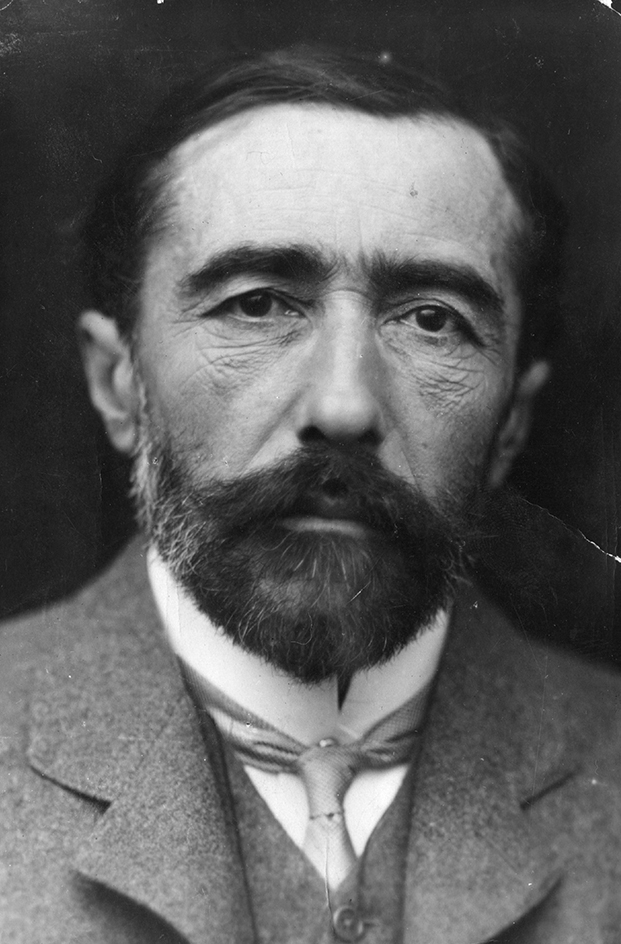
Rudyard Kipling is among the greatest writers exploring the British Empire. His Kim (1900) is a powerful narrative about colonial rule in India and the British conflict with Russia in Afghanistan. Arthur Conan Doyle wrote his stories and novels about detective Sherlock Holmes from 1886 to 1927, thus spanning the Victorian, Edwardian, and Georgian periods.
Beginning about 1905, a group of writers and artists met frequently in a section of London called Bloomsbury to discuss intellectual questions. They were known as the Bloomsbury Group. The leading Bloomsbury writer was Virginia Woolf. In such novels as Mrs. Dalloway (1925) and To the Lighthouse (1927), she wrote with great insight about the collapse of belief systems of the 1800’s and its transforming effect on the lives of her characters. Woolf used a technique called stream of consciousness to reveal the inner thoughts of her characters, capturing even their most fleeting experiences. Woolf also wrote critical essays on literature and society. In A Room of One’s Own (1929), she discussed many of the social, economic, and psychological disadvantages facing women writers. Novelist E. M. Forster was associated with Bloomsbury. His important novels include A Room with a View (1908), Howards End (1910), and A Passage to India (1924).
The leading poets of the early 1900’s belonged to a group called the Georgians. The group’s name came from George V, who became king on the death of his father, Edward VII. The Georgians wrote poetry about nature and the pleasures of rural living. Their work was idealistic and traditional. The most important members of the group included Rupert Brooke and John Masefield. Brooke was one of several promising young writers who died during World War I. His poem “The Soldier” (1915) is one of the most touching patriotic sonnets ever written.
Poetry between the wars.
English poetry changed in both form and subject matter between the end of World War I in 1918 and the outbreak of World War II in 1939. The horrifying battlefield experiences of World War I had an enormous impact on English literature. A number of poets serving in the British Army expressed their disillusionment with conventional patriotic ideas and imagery. Their poetry describes scenes of warfare with unusual realism. Siegfried Sassoon and Wilfred Owen were among the most important of these war poets. Owen, like Brooke, died in the war.
The destructiveness of the war left many people with the feeling that traditional society was falling apart. T. S. Eliot best summarized their despair in The Waste Land (1922), the most influential poem of the period. Its jagged style, complex symbols, and ironic references to other literary works set a new pattern for poetry. Eliot was conservative in politics and religion. But W. H. Auden, Stephen Spender, and Cecil Day-Lewis expressed radical political ideals in their verse. All three criticized injustices they saw in an unequal society. For all of these poets, society suffered from feelings of rootlessness and isolation. Dame Edith Sitwell also was an important poet of the era.
Hugh MacDiarmid was a Scottish nationalist and political radical who wanted to capture a specifically Scottish cultural identity in his poetry. Dylan Thomas became the greatest Welsh poet of the 1900’s. He published his first volumes of poetry in the 1930’s, expressing his passionate love of life in vivid and melodious verse. Thomas became famous in the 1940’s and 1950’s for his radio readings of his own works, including his poem on the death of his father, “Do Not Go Gentle into That Good Night” (1952). 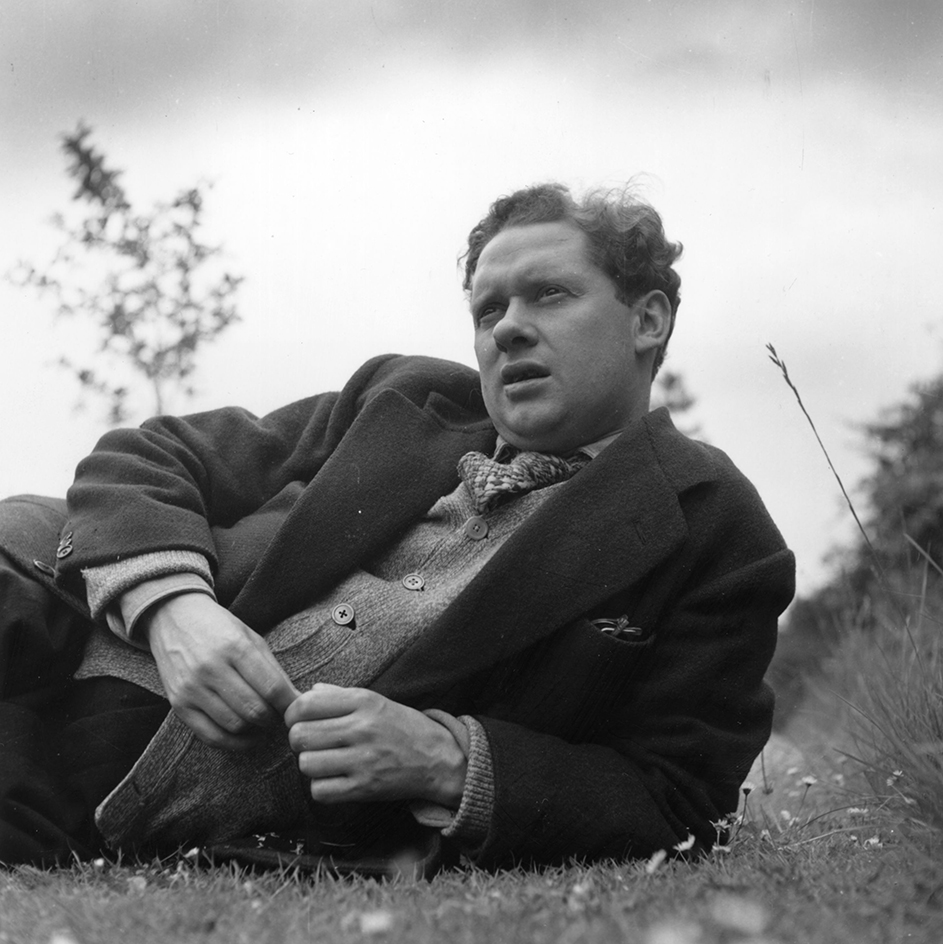
Fiction between the wars.
Virginia Woolf remained the outstanding novelist of this period until her death in 1941. Another important novelist was D. H. Lawrence. He explored relationships between men and women in Women in Love (1920) and other autobiographical novels. Ford Madox Ford described changes in English society during and after World War I in The Good Soldier (1915) and in four novels titled Parade’s End (1924-1928). Graham Greene wrote about people troubled by difficult moral or religious problems in The Power and the Glory (1940) and other novels.
Several writers wrote humorous, satirical novels. Evelyn Waugh satirized wealthy and fashionable young people in Vile Bodies (1930) and A Handful of Dust (1934). Aldous Huxley also made fun of fashionable society in Crome Yellow (1921) and Point Counter Point (1928). But Huxley’s best-known novel is Brave New World (1932), which describes a terrifying future society that eliminates individuality and personal liberty.
T. E. Lawrence, also known as Lawrence of Arabia, wrote an important autobiography of the period, Seven Pillars of Wisdom (1926). The book describes his experiences as a British military leader during the Arab revolt in the middle of World War I.
Literature after World War II.
After World War II, the United Kingdom gradually lost most of its overseas empire. A sense of shrinking power in the world contributed to the anger and pessimism of much English literature in the years following the war. At the same time, many authors from the former English colonies settled in the United Kingdom and made important and original contributions to English literature.
Writers from the pre-war period, such as Greene and Auden, continued to produce important works after World War II. George Orwell began his literary career in the 1930’s as an outstanding journalist and memoir writer, as in Homage to Catalonia (1938), about the Spanish Civil War (1936-1939). His reputation was enhanced by Animal Farm (1945), a fable about communist totalitarianism, and 1984 (1949), a frightening story describing a future society that distorts truth and deprives the individual of privacy and liberty.
During the 1950’s, a number of younger writers expressed their discontent with traditional English politics, education, and literature. These writers were labeled the Angry Young Men. They included the playwright John Osborne and the novelist John Braine. Osborne’s drama Look Back in Anger (1956) describes a young working-class man’s resentment of the English class system. In Room at the Top (1957), Braine created an ambitious working-class hero who has little respect for traditional English ways of life. Kingsley Amis’s novel Lucky Jim (1954) satirized the self-satisfied and pretentious society of an English university.
Amis was also associated with the Movement, a name given to a group of writers in the 1950’s who shared an interest in bringing clarity, restraint, and traditional craftsmanship to their writing. The Movement included novelists and playwrights, but the term usually refers to poets. The leading Movement poet was Philip Larkin. He combined traditional lyric forms with modern, everyday, and sometimes even vulgar vocabulary. Many of his poems explore change, loss, and death. At the height of his reputation, Larkin published his last collection, High Windows (1974), which included “The Building” and “The Old Fool.” Larkin grew increasingly conservative in later years. He and Amis were typical of several post-war British writers who felt great unease at the changes in British society following the loss of its empire.
Several authors wrote about such changes in society in multivolume works that follow many characters over a long period. Anthony Powell wrote a 12-volume novel titled A Dance to the Music of Time (1951-1975). It portrays upper middle-class society from the 1920’s to the 1970’s. Paul Scott wrote about the final years of British rule in India in the four-volume Raj Quartet (1966-1975). Doris Lessing wrote the five-volume Children of Violence (1952-1969). It deals with a British woman who grows up in Rhodesia (now Zimbabwe), moves to England, and becomes involved in radical politics. 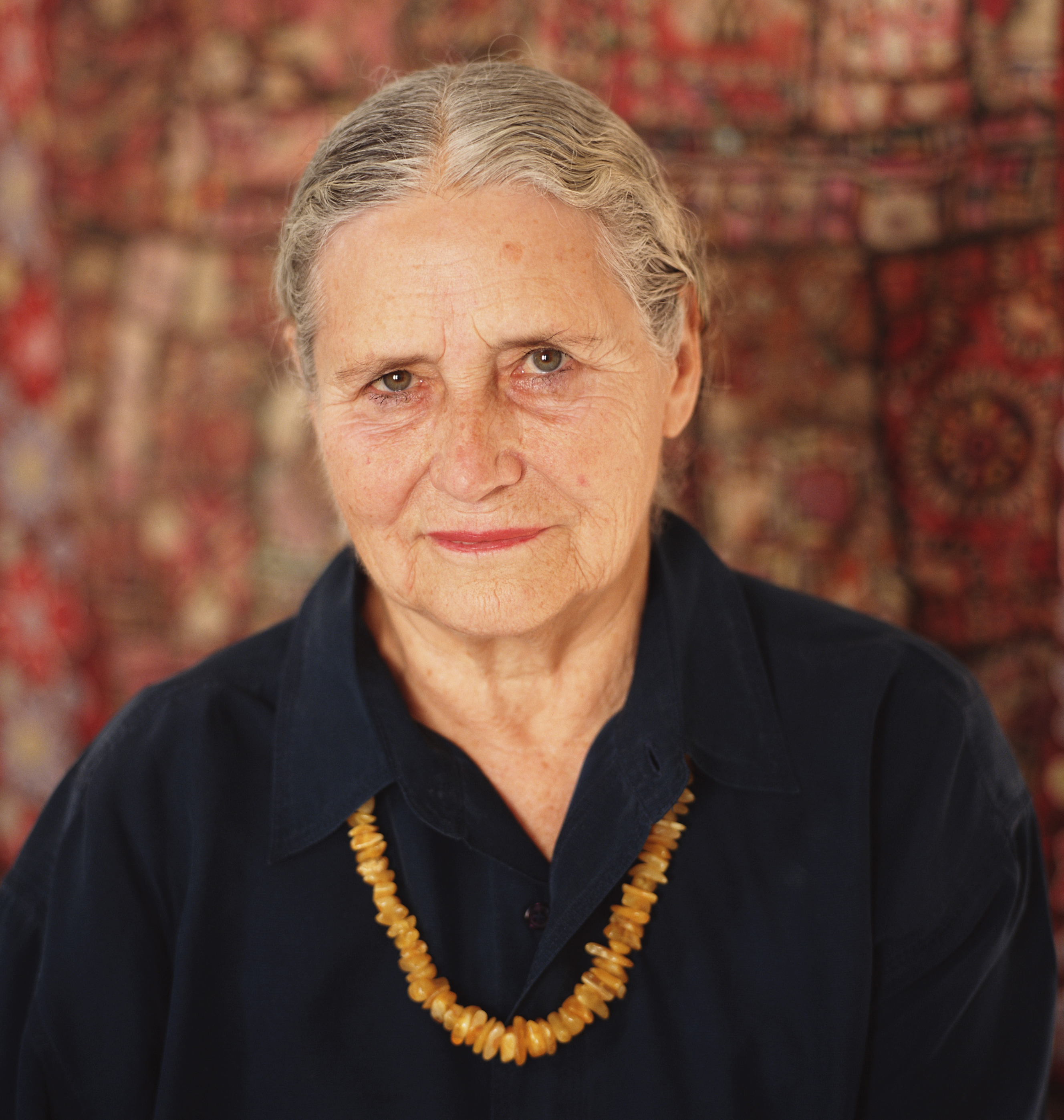
William Golding wrote one of the most disturbing novels of the 1950’s, Lord of the Flies (1954). In the novel, a group of English schoolboys are marooned on a deserted island and establish a rule of violence and terror.
In the 1950’s and 1960’s, three writers began publishing books that made them immensely popular. Ian Fleming wrote his first James Bond spy story, Casino Royale (1953). John Le Carré published his first espionage thriller, The Spy Who Came in from the Cold (1963). J. R. R. Tolkien wrote his three-volume epic fantasy, The Lord of the Rings (1954-1955).
In British drama, Harold Pinter was the most important playwright of the postwar period. He wrote plays that seem commonplace on the surface but have an underlying sense of menace. His most important early plays are The Caretaker (1960) and The Homecoming (1965). In the 1960’s, Joe Orton wrote several farces, including Entertaining Mr. Sloane (1964) and Loot (1966), that dealt with sexual themes that had never before been treated so openly on the English stage.
Tom Stoppard writes original and complex plays with philosophical themes. His works often experiment with imaginary historical situations and are remarkable for their verbal brilliance, notably Rosencrantz and Guildenstern Are Dead (1967), Travesties (1974), and Arcadia (1993). Peter Shaffer wrote a number of plays about the psychology of artists, outsiders, and nonconformists, as in Equus (1973) and Amadeus (1979).
English literature today
Recent English poetry
has moved away from the restraint and traditionalism of the Movement. One of the period’s most important poets, Ted Hughes, wrote on darker, mythical subject matter. His poetry often includes violent imagery, as in Crow (1970). In 1998, shortly before his death, Hughes published Birthday Letters, a group of poems looking back on his failed marriage to American poet Sylvia Plath.
Geoffrey Hill writes difficult, complex verse that often focuses on religious and historical themes. Douglas Dunn’s earliest poetry shows the influence of Larkin. However, some of his later work moves toward fantastic and Scottish-influenced themes. Linton Kwesi Johnson’s poetry combines the rhythms of English verse with those of Caribbean music and slang. This combination, called dub, has influenced many young black British writers. Fred D’Aguiar’s verse collection British Subjects (1993) emphasizes how Caribbean experience and culture have become part of recent British cultural identity.
The poet and literary critic Mark Ford displayed a conversational, learned, and witty style in collections such as Landlocked (1992). He explored memory, identity, and the supernatural in many of his poems. Alice Oswald became a leading nature poet with her detailed poetic study of the Devon River in Dart (2002) and Woods etc. (2005). Sean O’Brien writes darkly lyrical explorations of urban Britain. His poems are collected in Cousin Coat: Selected Poems 1976-2001 (2002).
Recent English fiction.
During the 1960’s and 1970’s, Iris Murdoch, Muriel Spark, and Anthony Burgess emerged as important novelists. Murdoch was a professor of philosophy who often treated questions of moral philosophy and sexuality in her fiction. Spark’s novels were often comic but with disturbing and even Gothic undertones. Burgess wrote experimental novels of great verbal complexity and wit. In A Clockwork Orange (1962), he told the story of a violent juvenile delinquent who is brainwashed into numb social conformity.
Significant English novelists have often come from abroad or from the United Kingdom’s various immigrant communities. They include Salman Rushdie from India, Kazuo Ishiguro from Japan, V. S. Naipaul from Trinidad, and Caryl Phillips from the Caribbean. Rushdie is the outstanding figure of this group. His writing has been described as an example of magic realism, a style that combines realism with fantastic or apparently supernatural events. His novels, including Midnight’s Children (1981), overflow with multiple characters and stories. Ishiguro’s novels offer subtle psychological explorations of memory and history, as in The Remains of the Day (1989). Naipaul is a travel writer of beautifully written but controversial views of societies after the end of colonialism. Phillips’s novels, such as Crossing the River (1993), show the experience of ethnic hatred, slavery, and exile through the use of historical settings and multiple narrators.
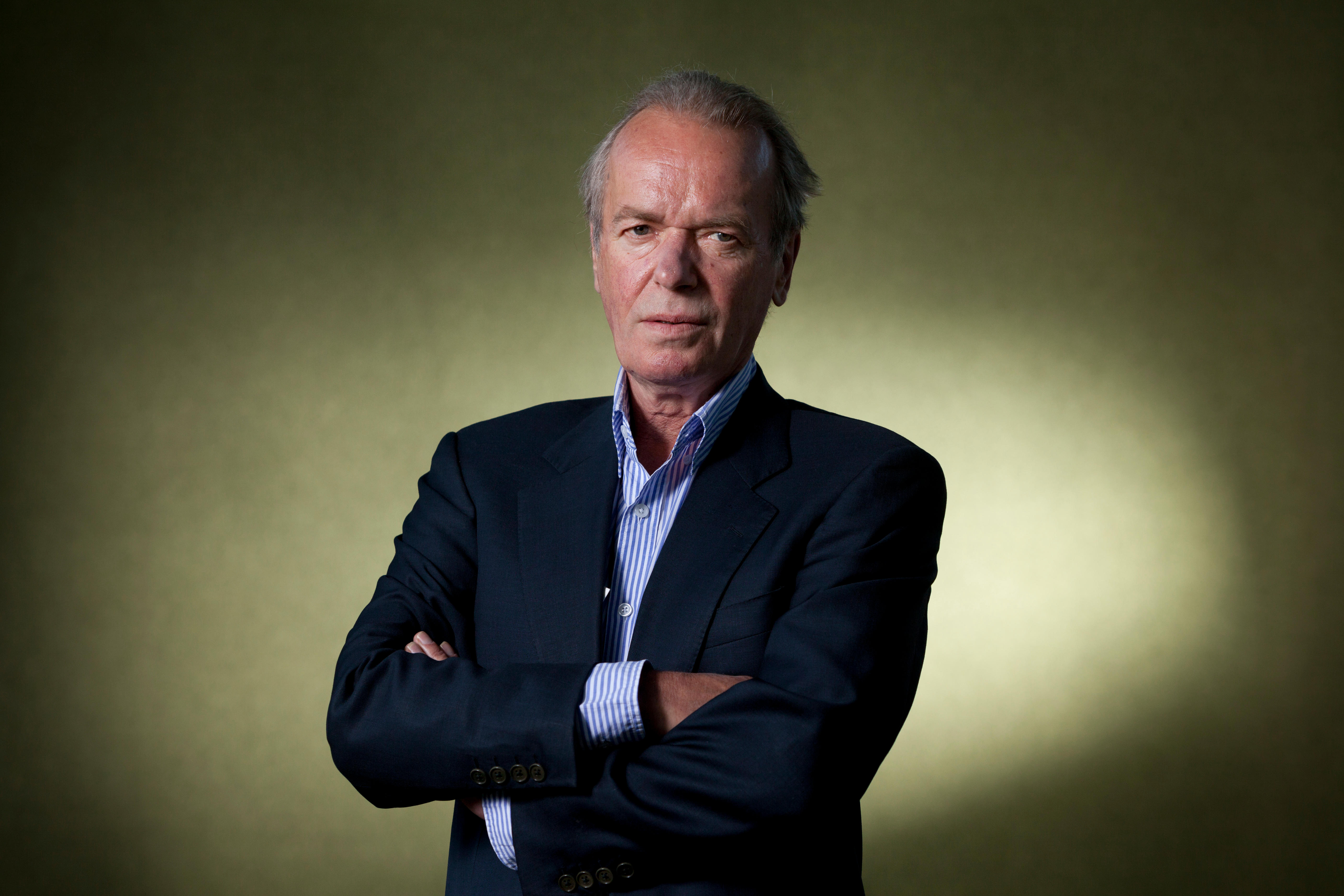
In the early 2000’s, Zadie Smith wrote White Teeth (2000), an ambitious, alternately comic and tragic account of multicultural London and global terrorism. Ian McEwan’s novels are noted for their portrayal of time and place, as in Atonement (2001). Edward St. Aubyn’s “Patrick Melrose” novels (1992-2011) combine social satire with a gritty account of sex and drugs. Hilary Mantel brought renewed vigor to the historical novel tradition that began with Sir Walter Scott. Her Wolf Hall (2009), Bring Up the Bodies (2012), and The Mirror & the Light (2020) deal with intrigue in the court of Henry VIII.
Recent English drama.
Several playwrights have engaged political issues in their work. Edward Bond has written plays about class conflict and oppression throughout British and continental European history. His trilogy “The War Plays” (1984-1985) examines societies suffering from the aftermath of nuclear attacks. Caryl Churchill draws on such themes as the connection between colonial and sexual oppression in British history. Her Top Girls (1982) deals with social roles and financial power. David Hare has examined key British institutions—the Anglican church, the legal system, and political parties—in three related plays: Racing Demon (1990), Murmuring Judges (1991), and The Absence of War (1993). Michael Frayn created a classic farce with Noises Off (1982), which comically portrays the backstage antics of a company of actors putting on a play. 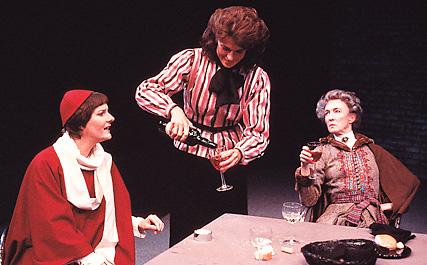
In the 2000’s, Bola Agbaje’s Gone Too Far! (2007) examines racism, poverty, and the immigrant experience as it follows two Nigerian brothers traveling through London on an errand. Jez Butterworth satirized modern England in Jerusalem (2009), portraying a fun-loving man’s fight to keep his mobile home in the countryside.
